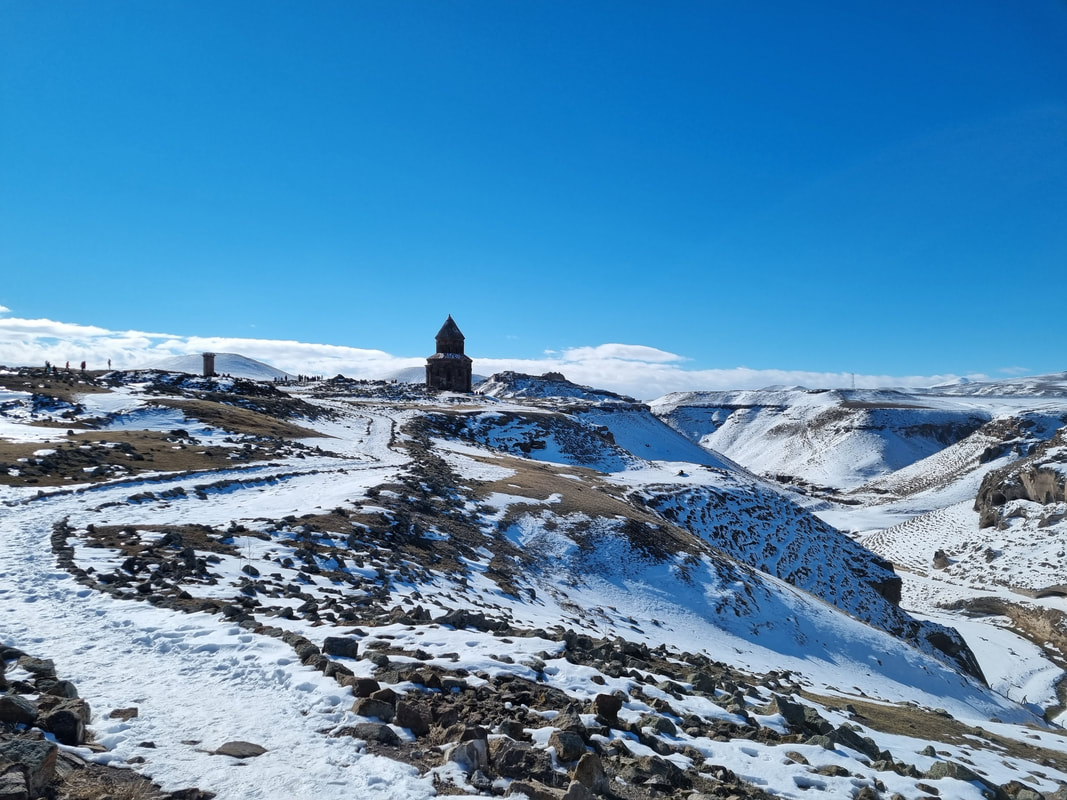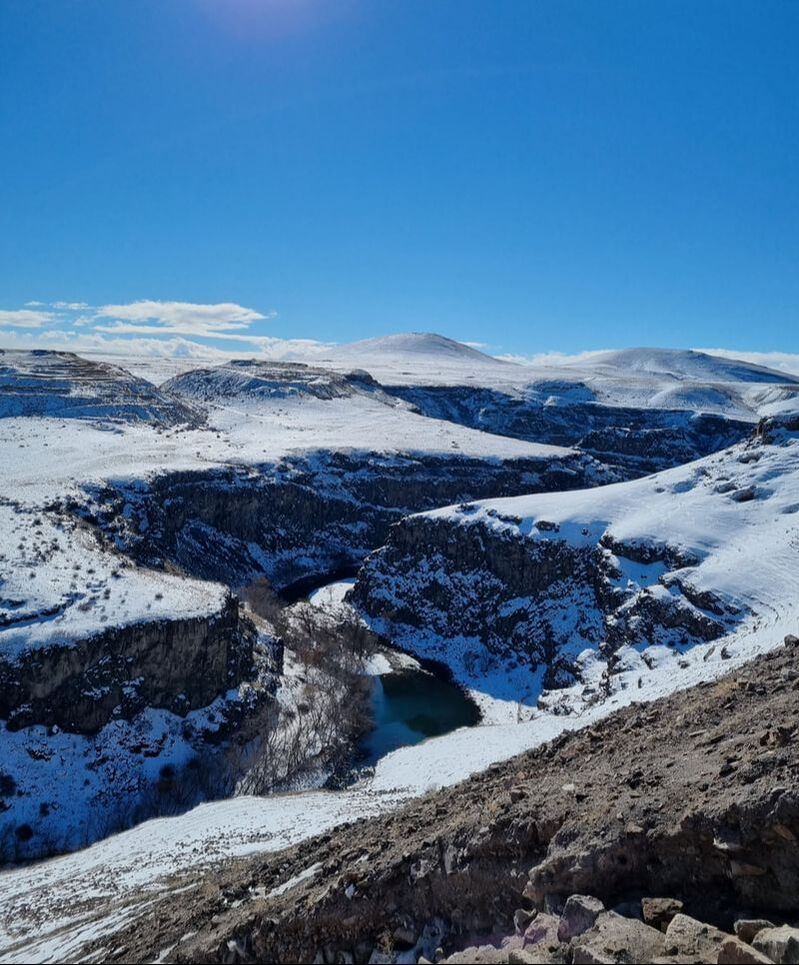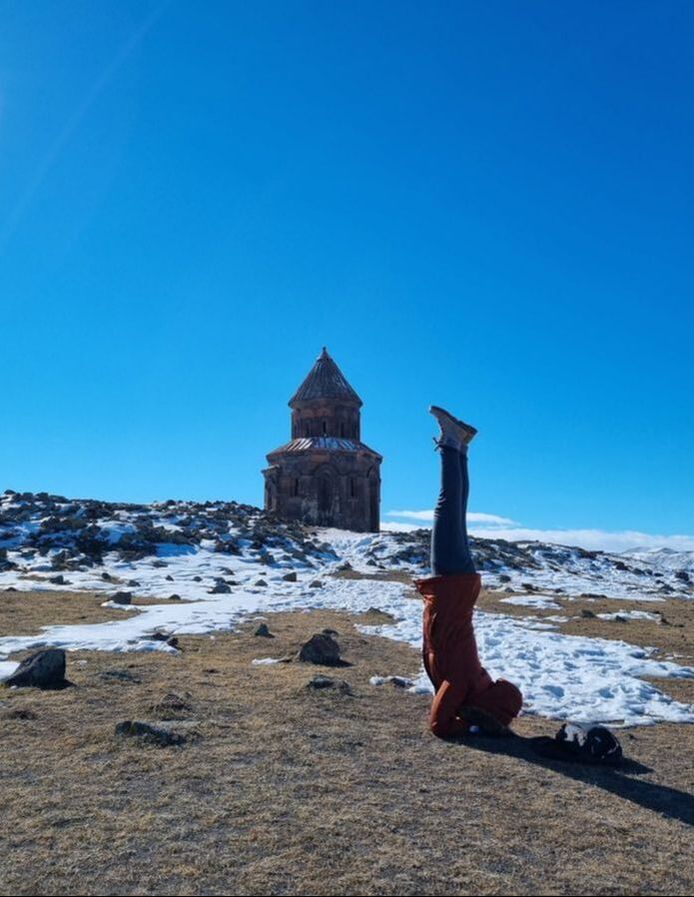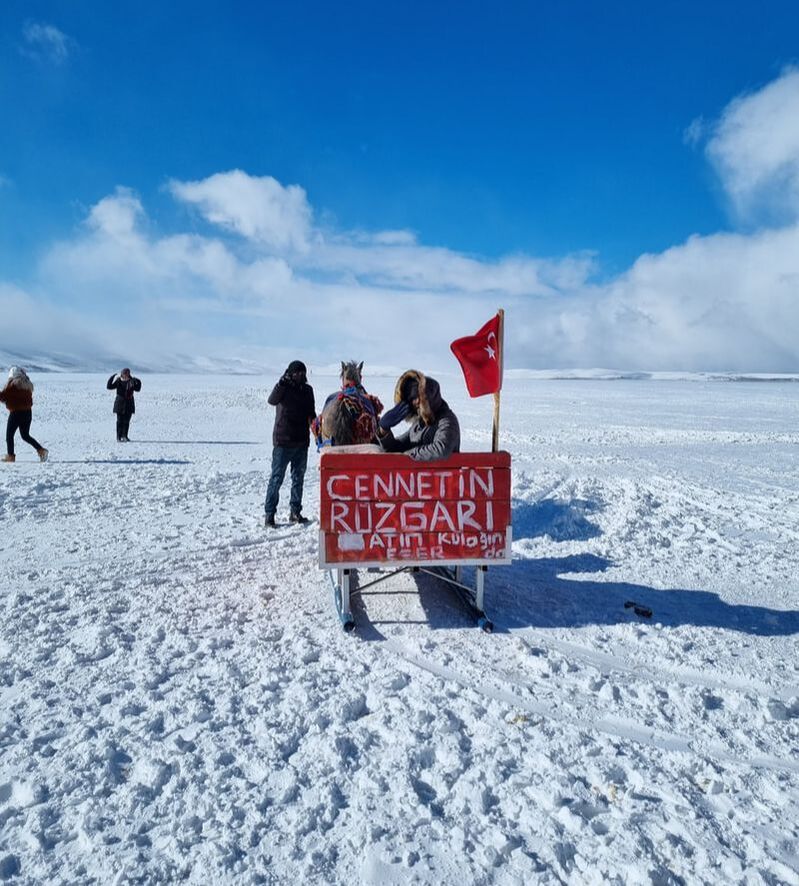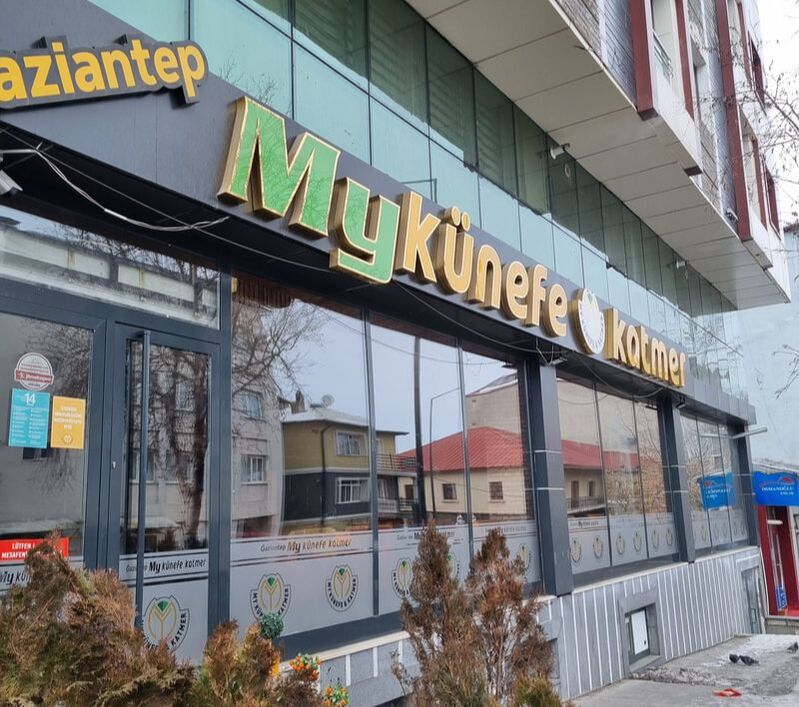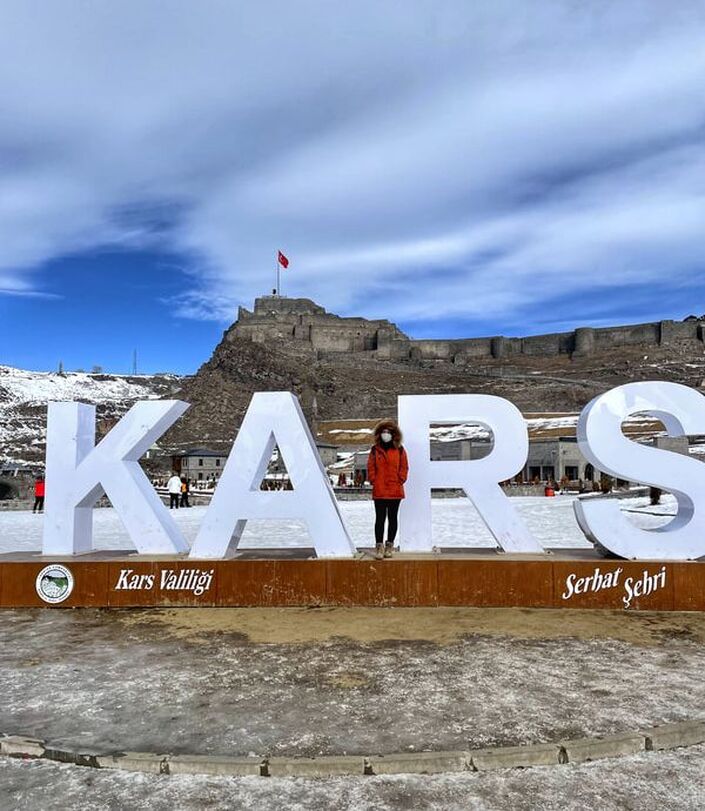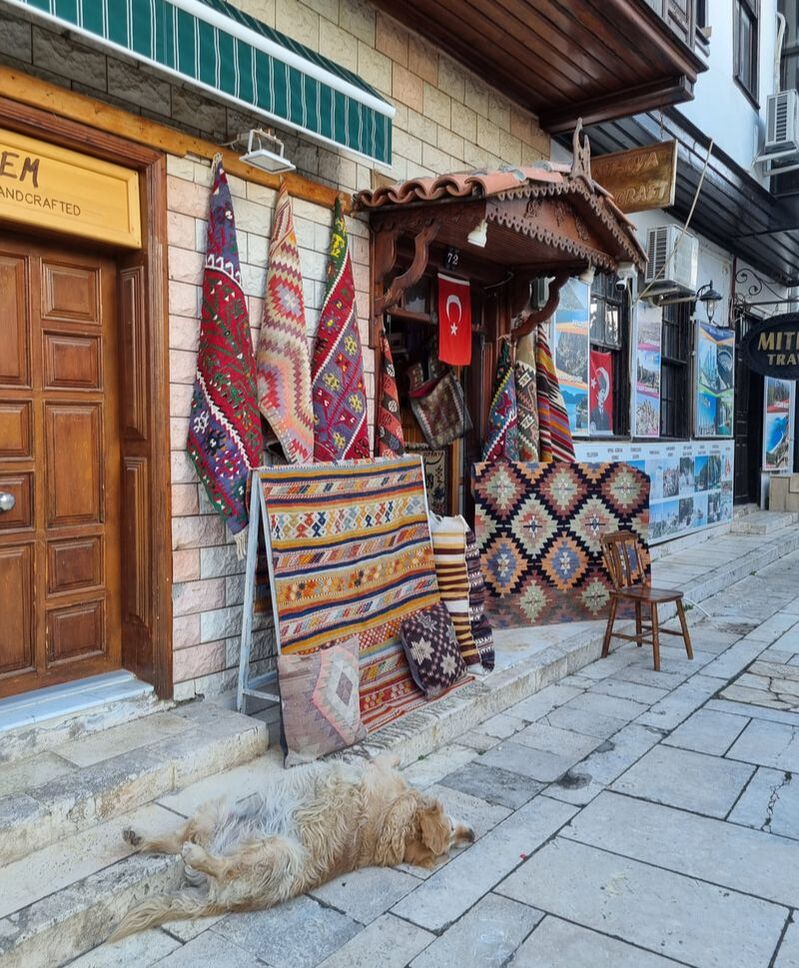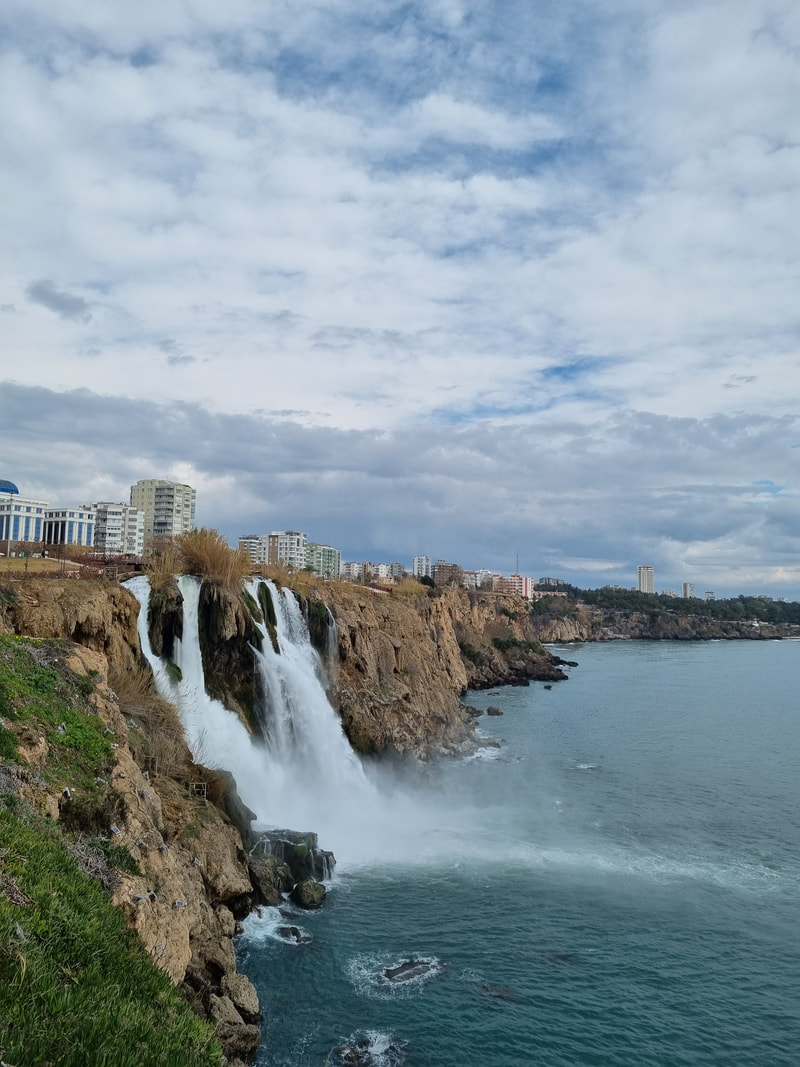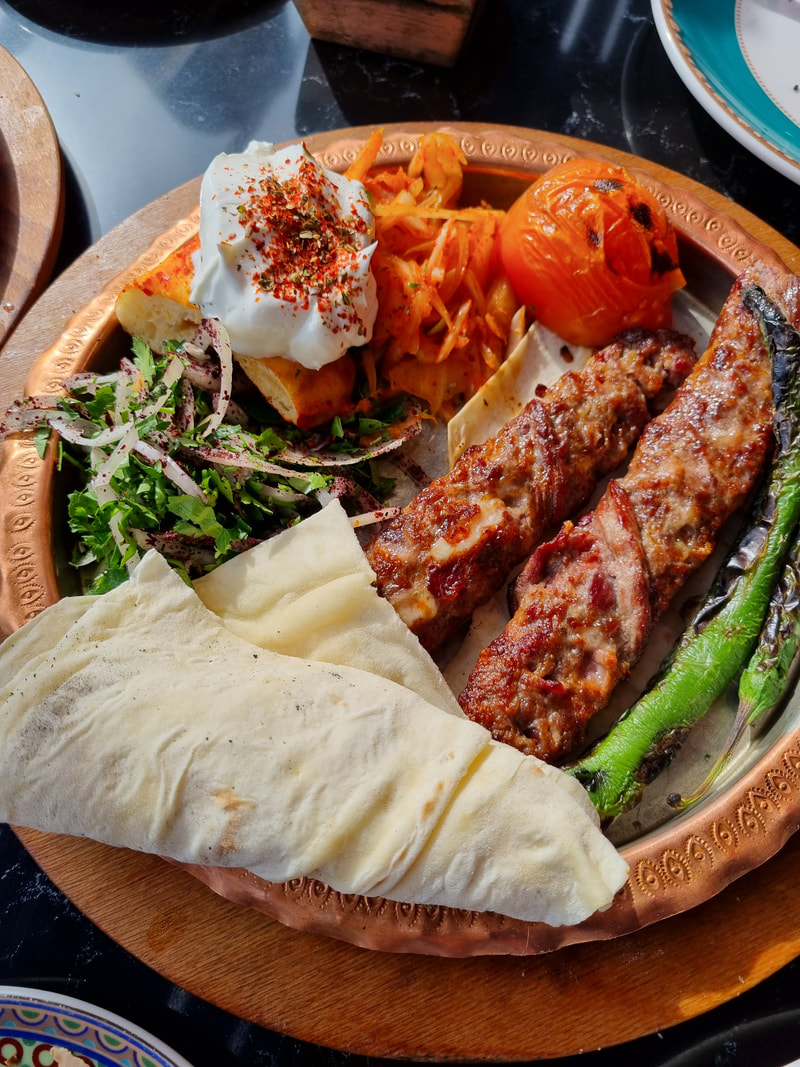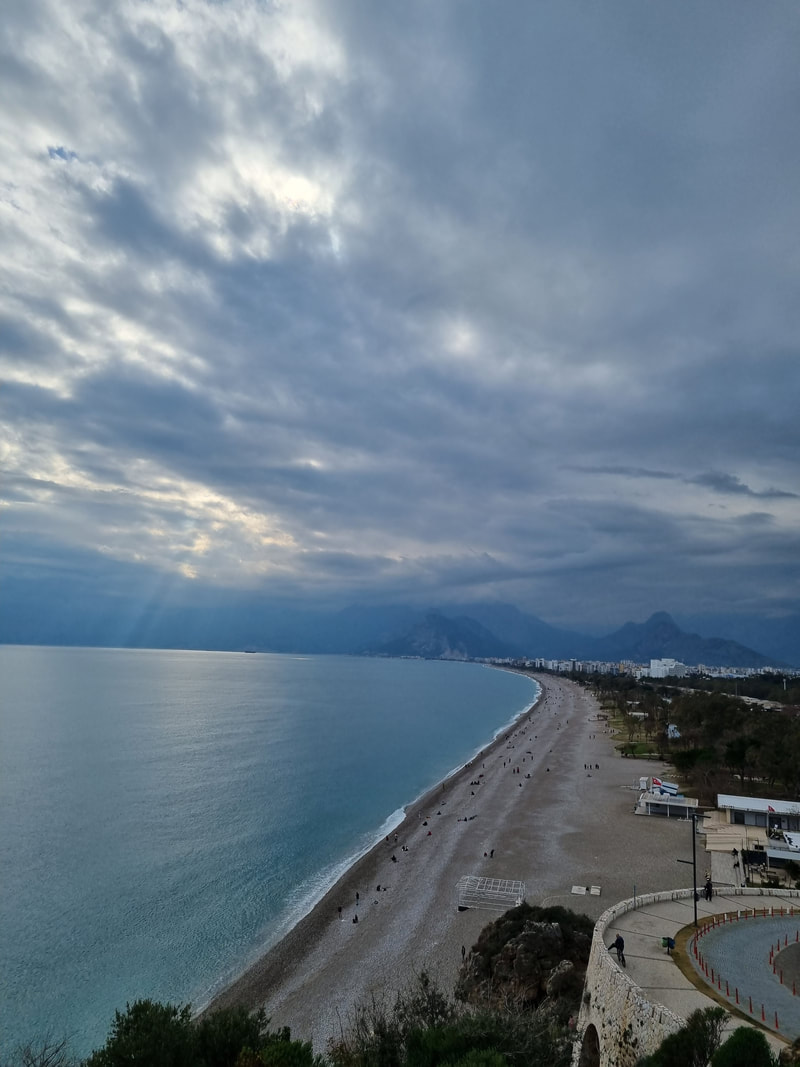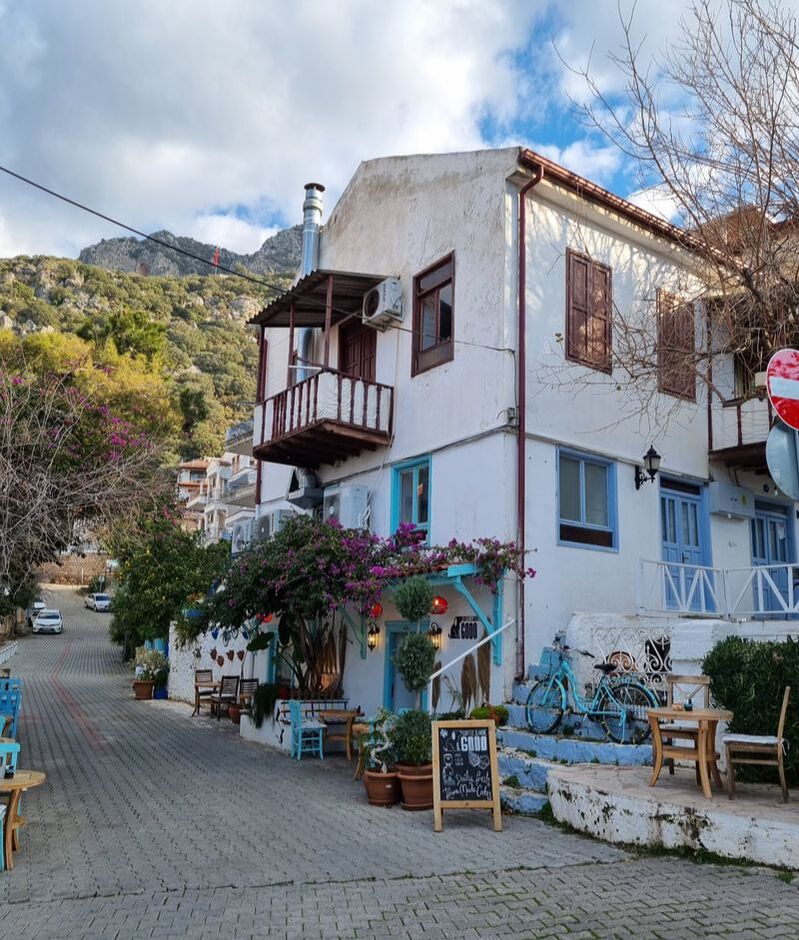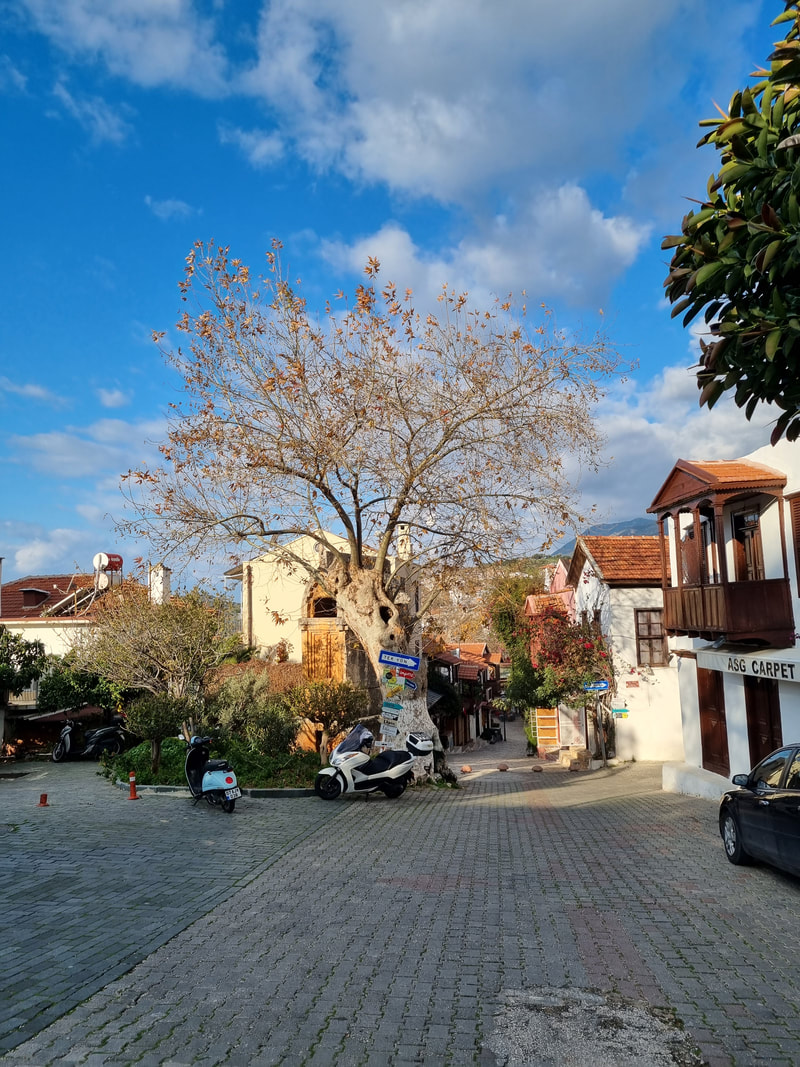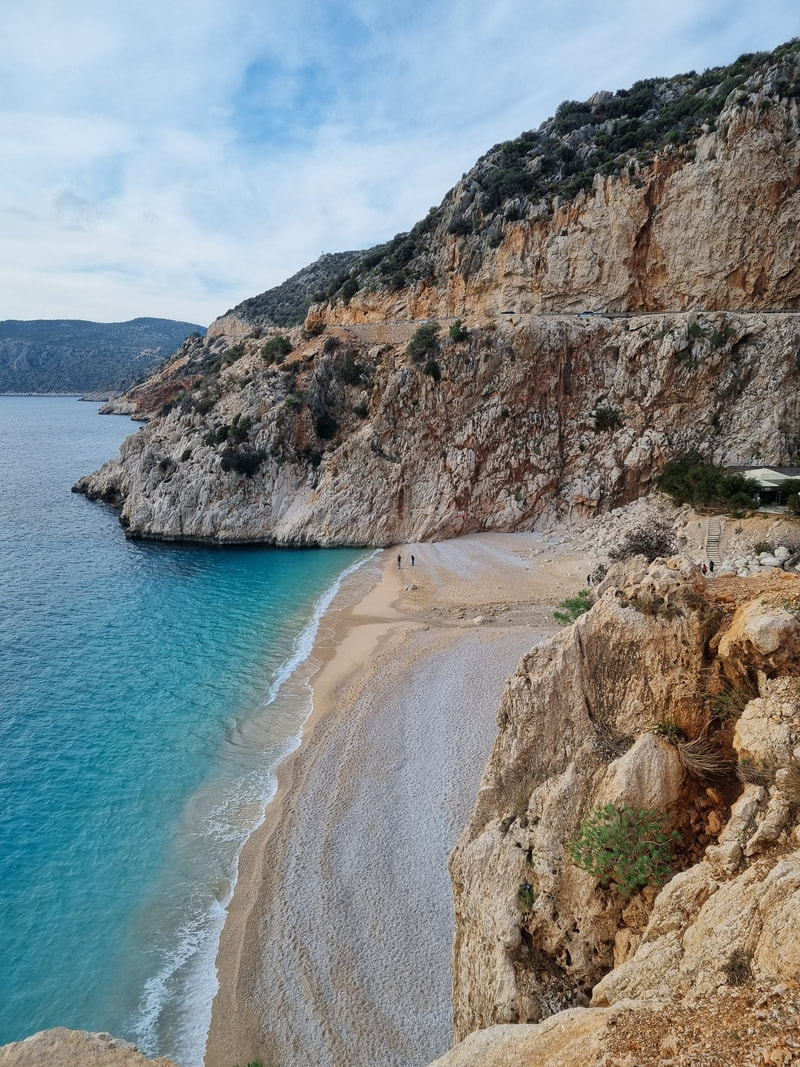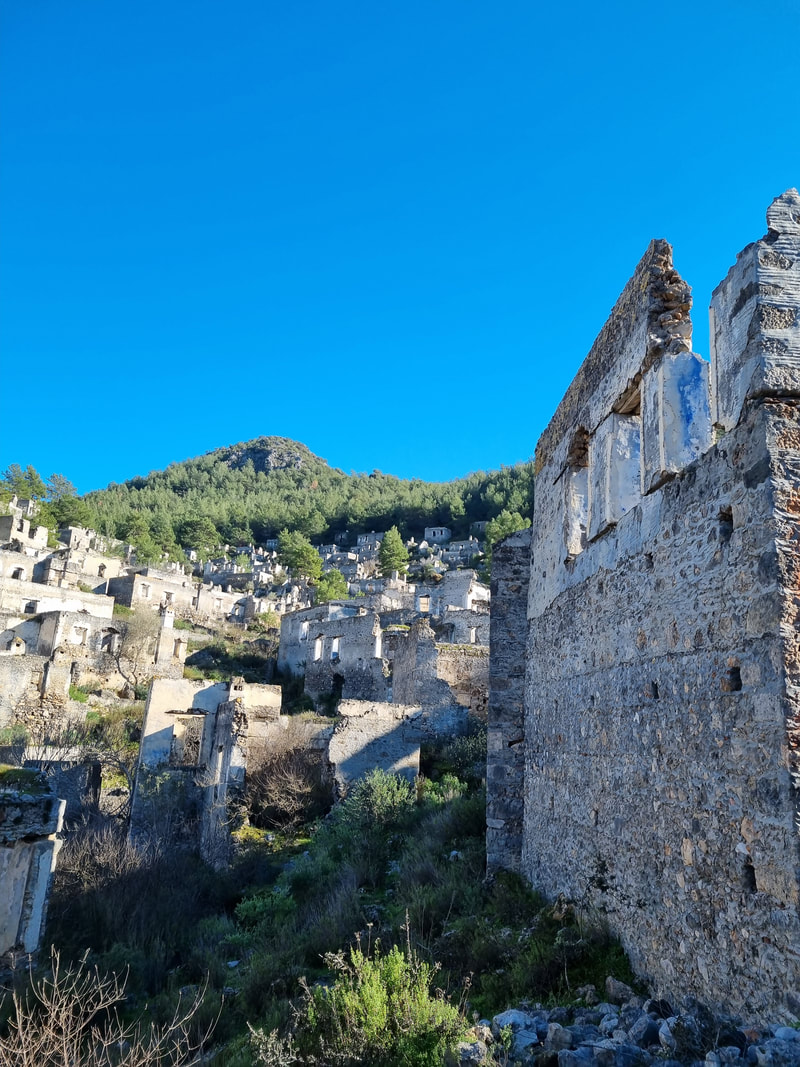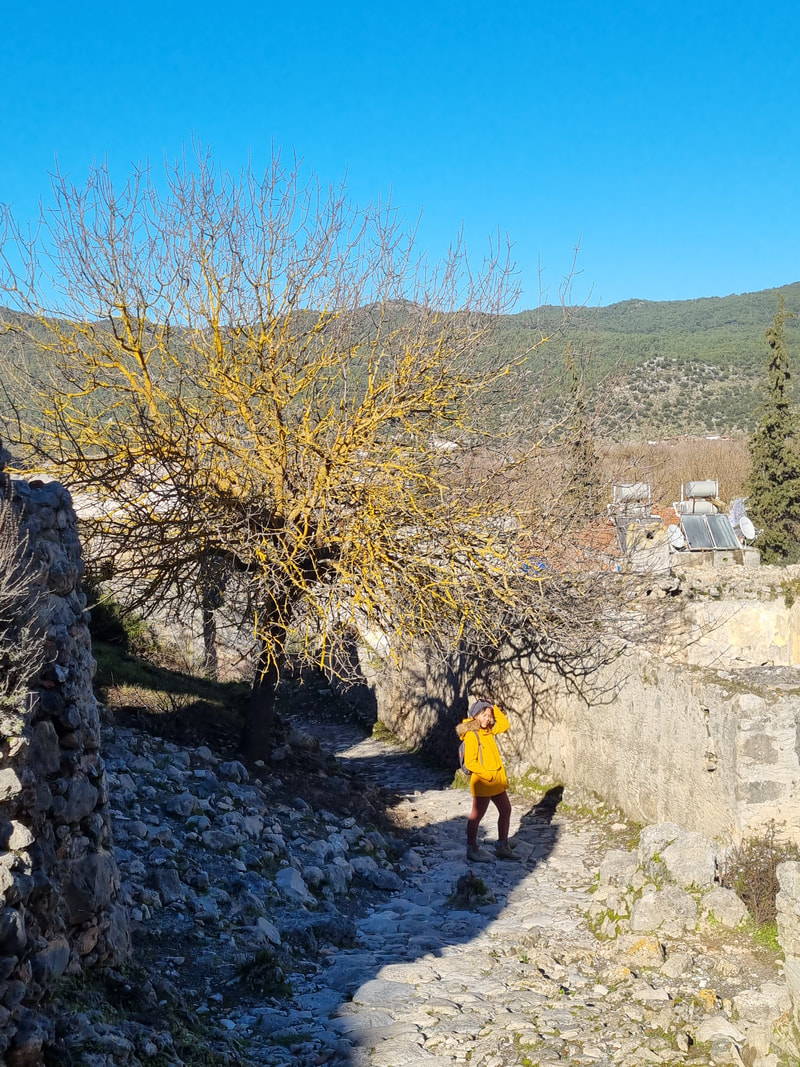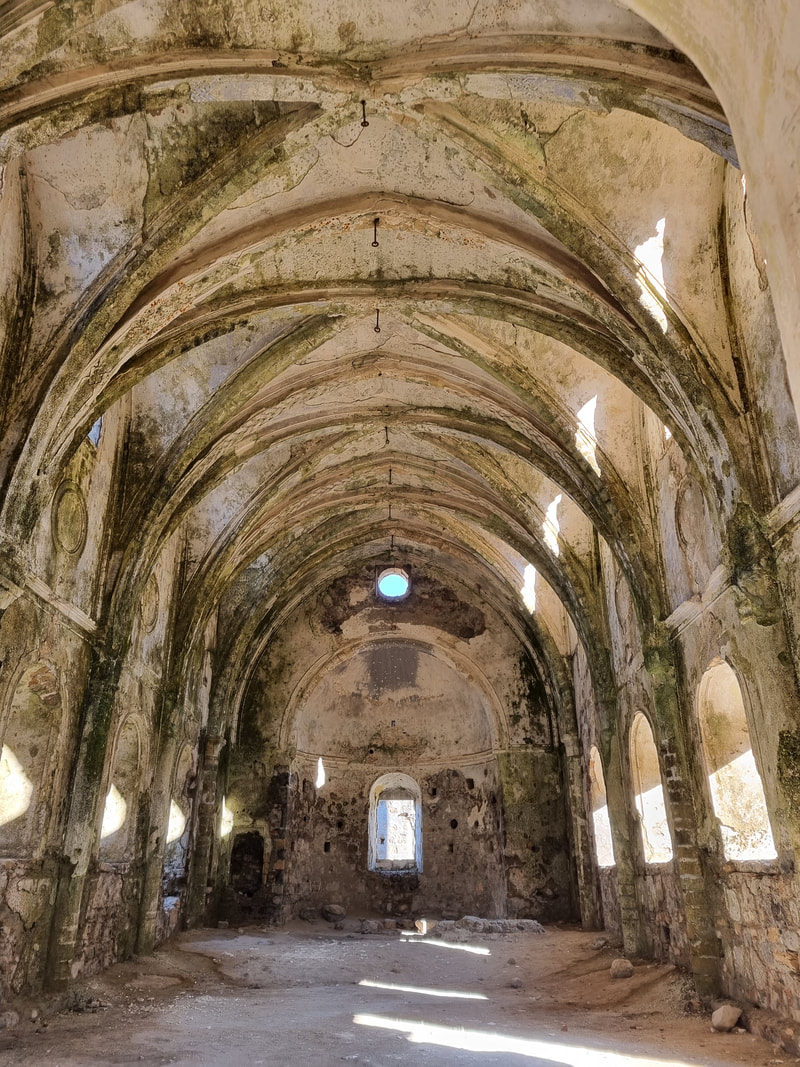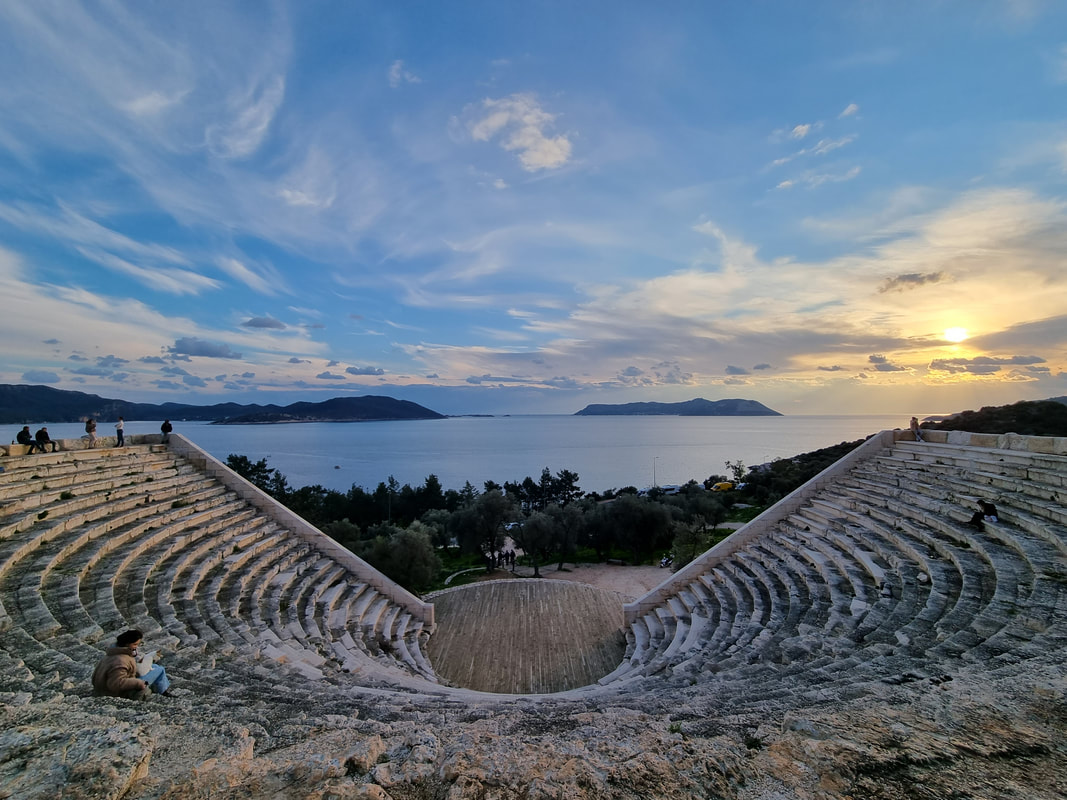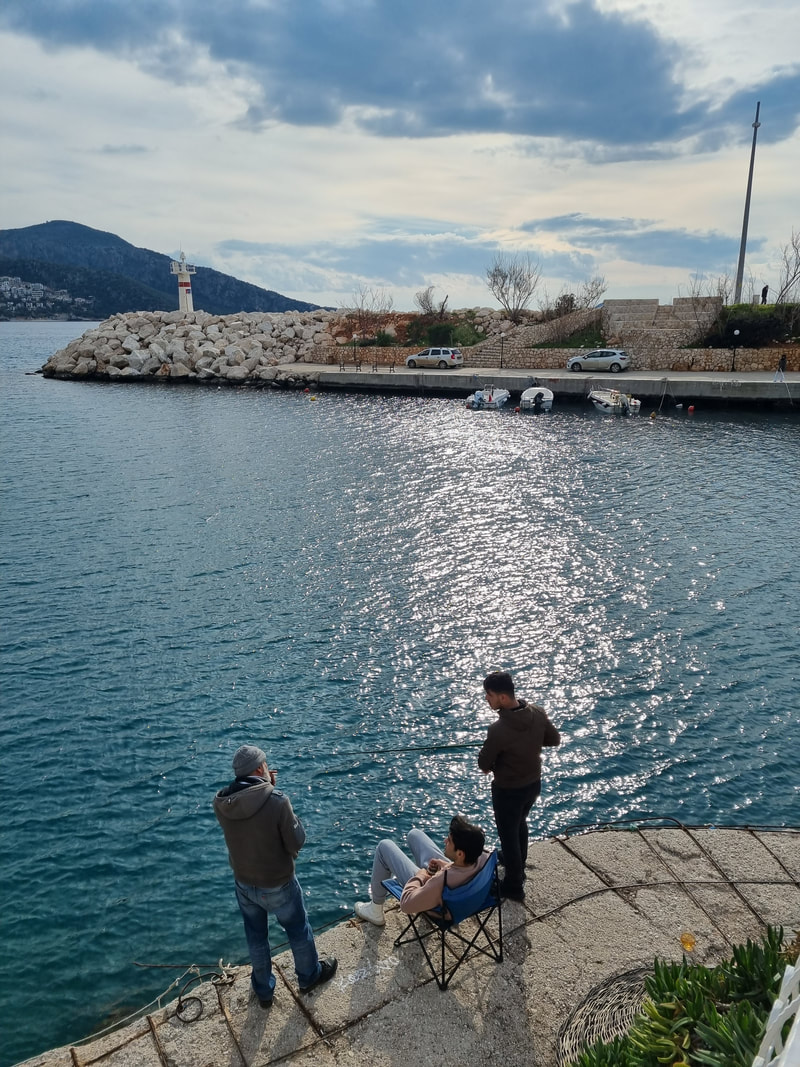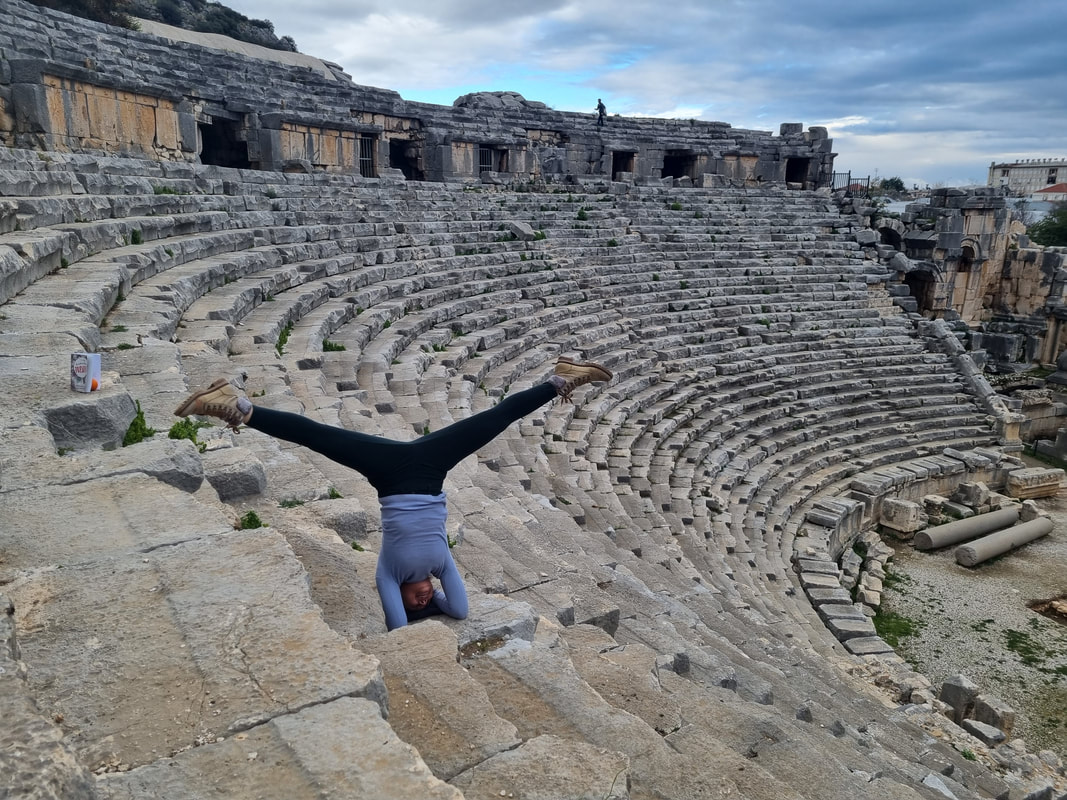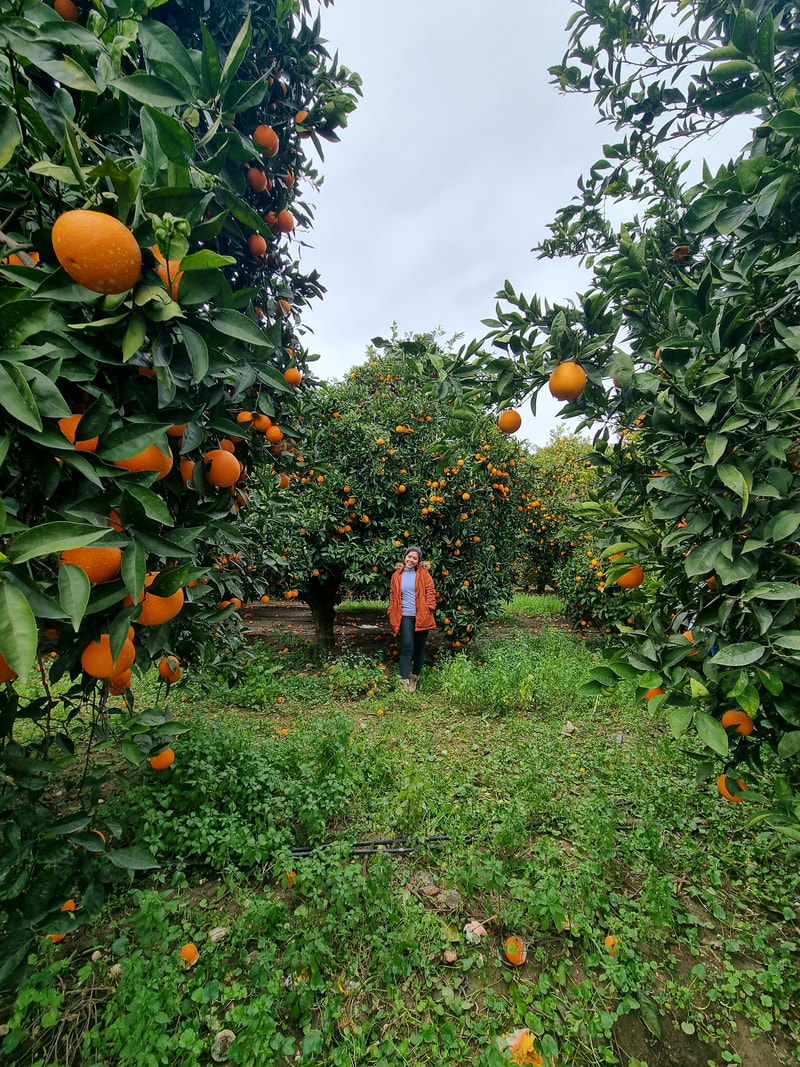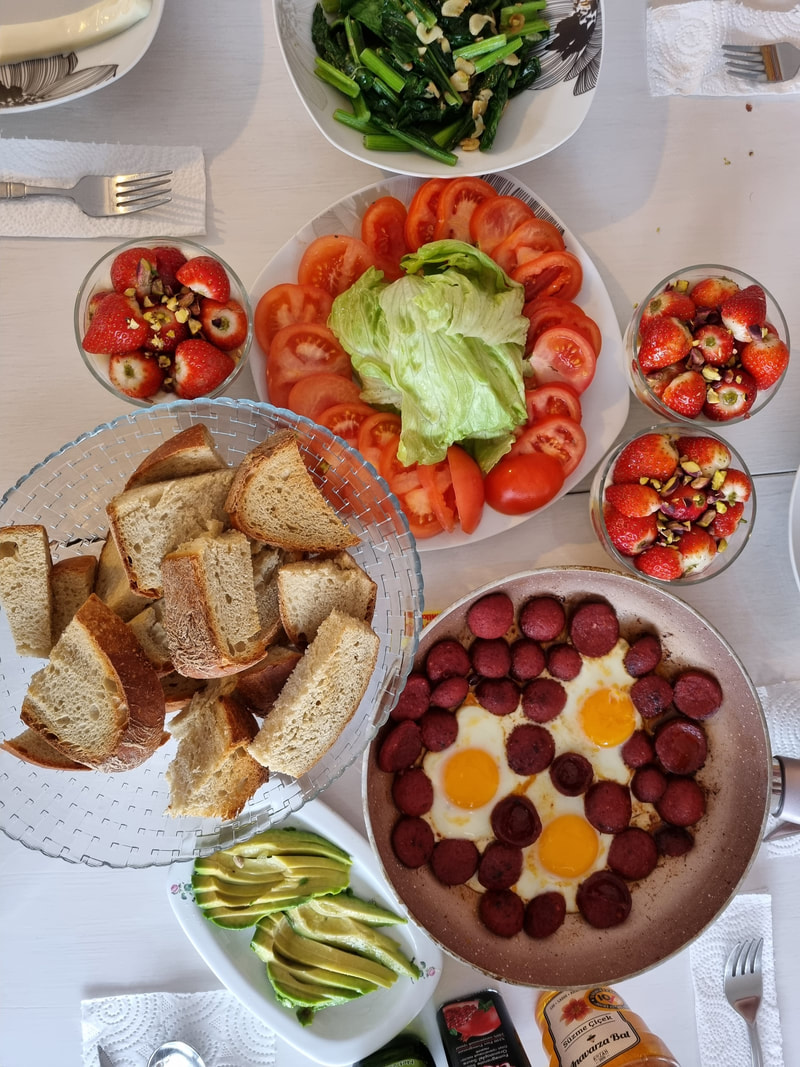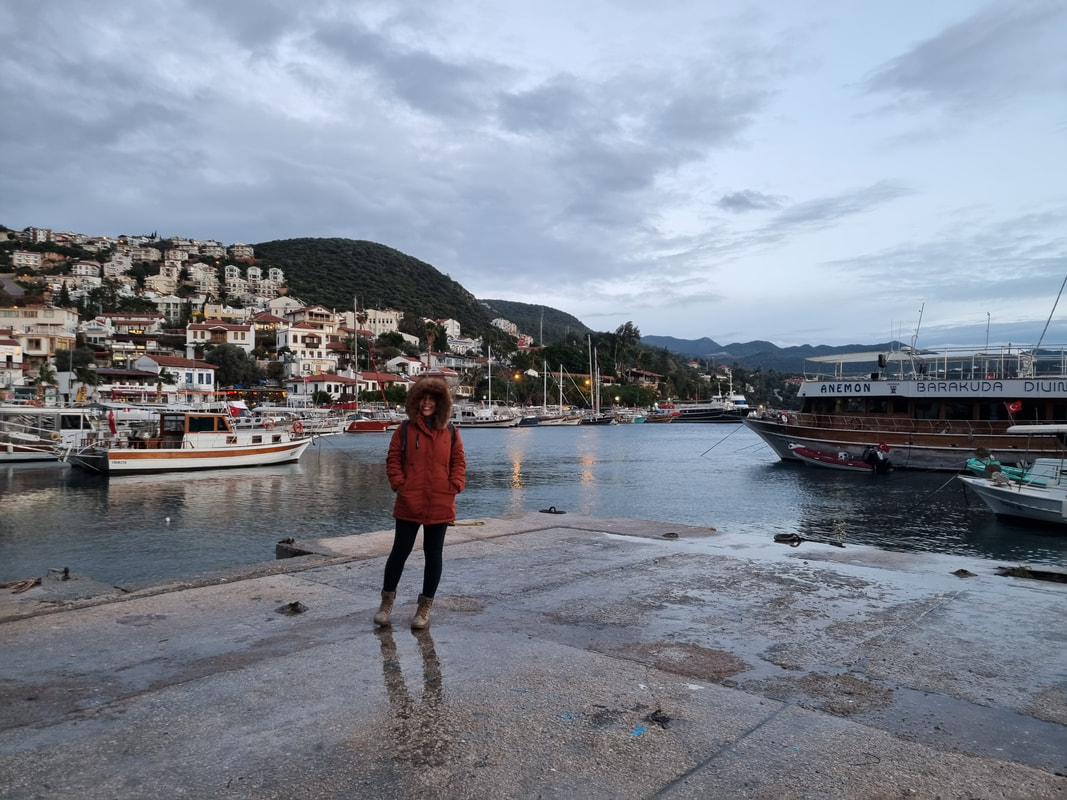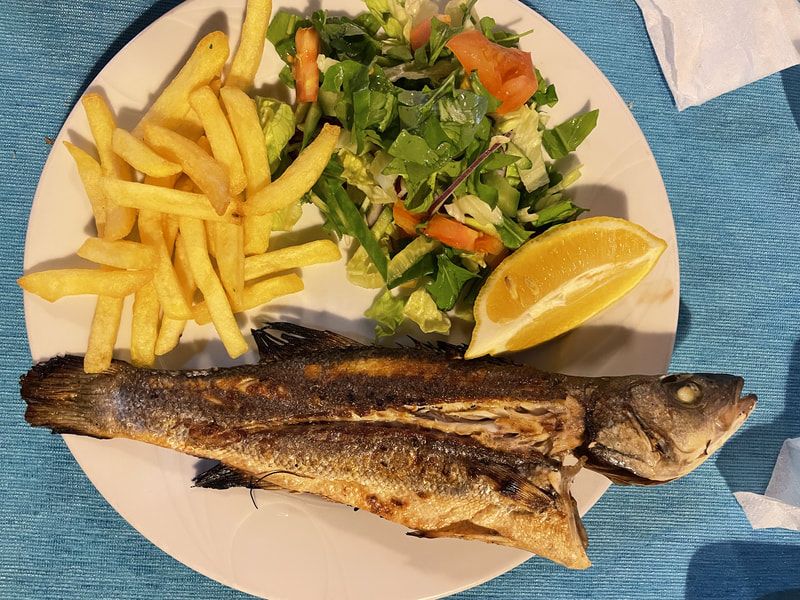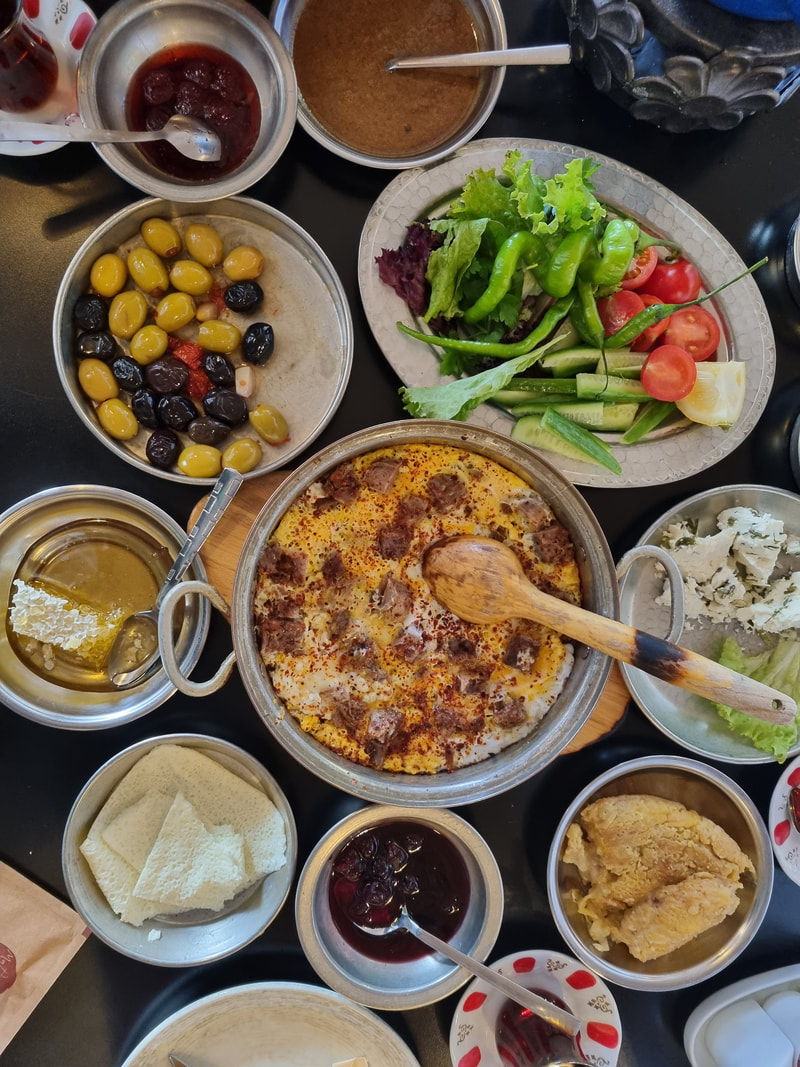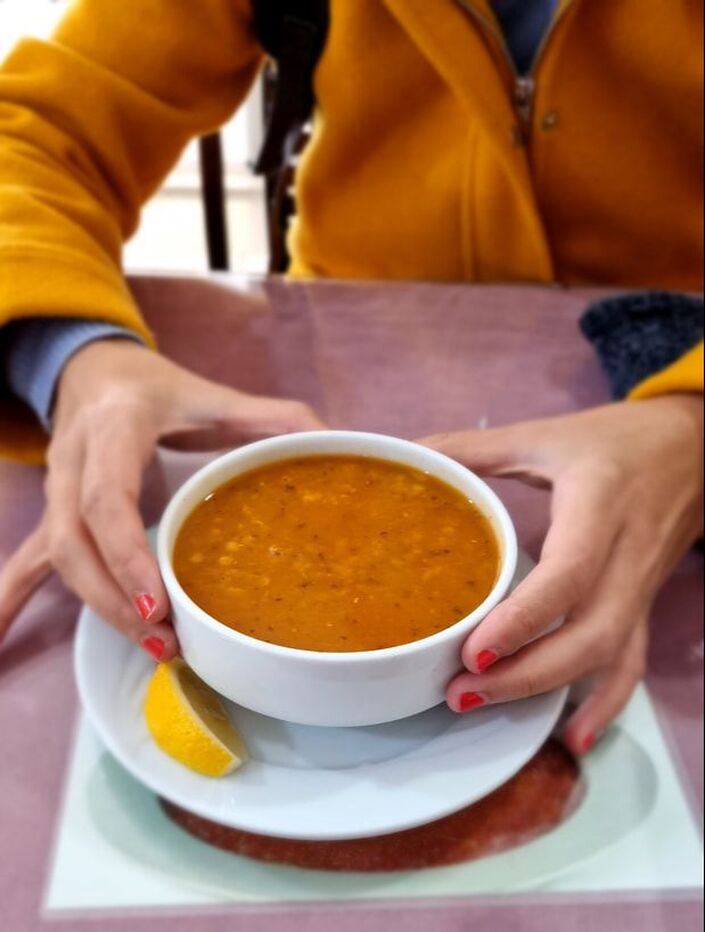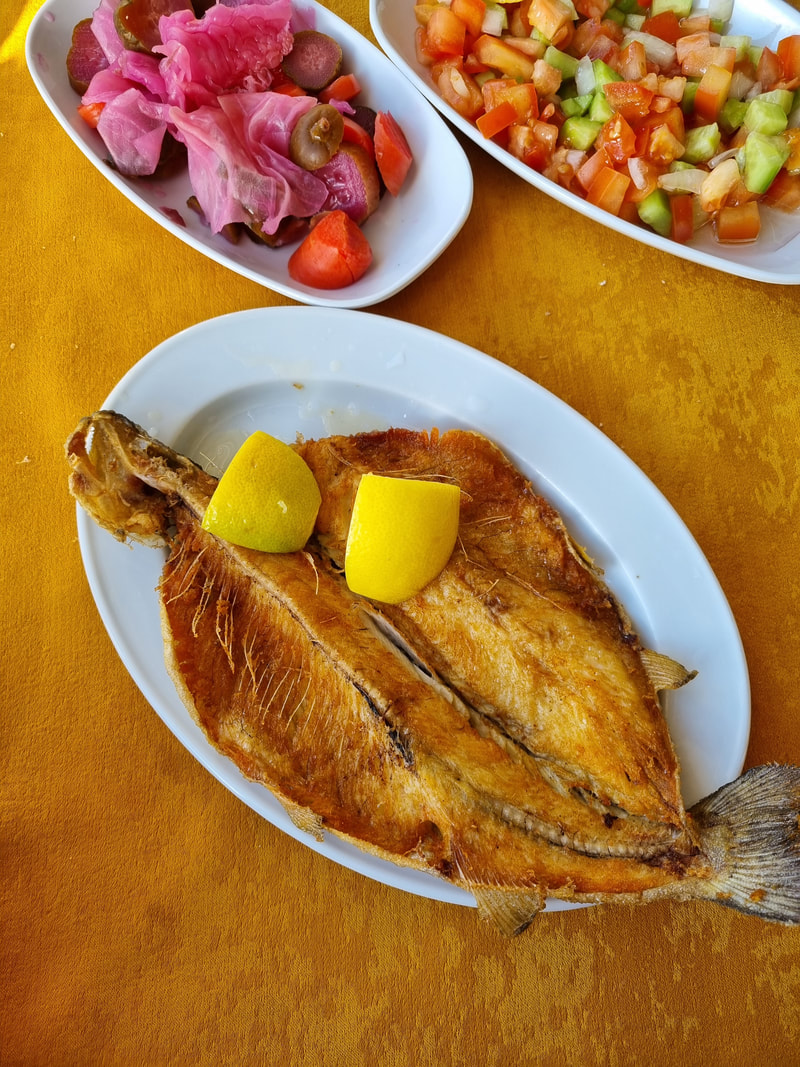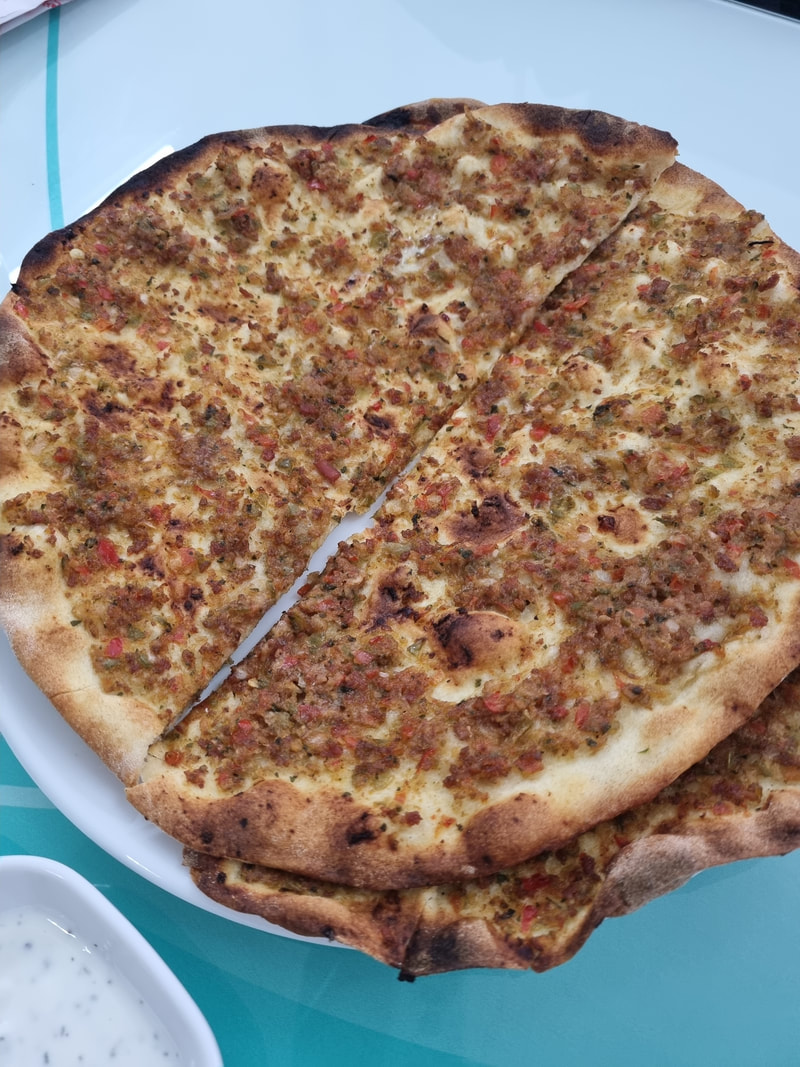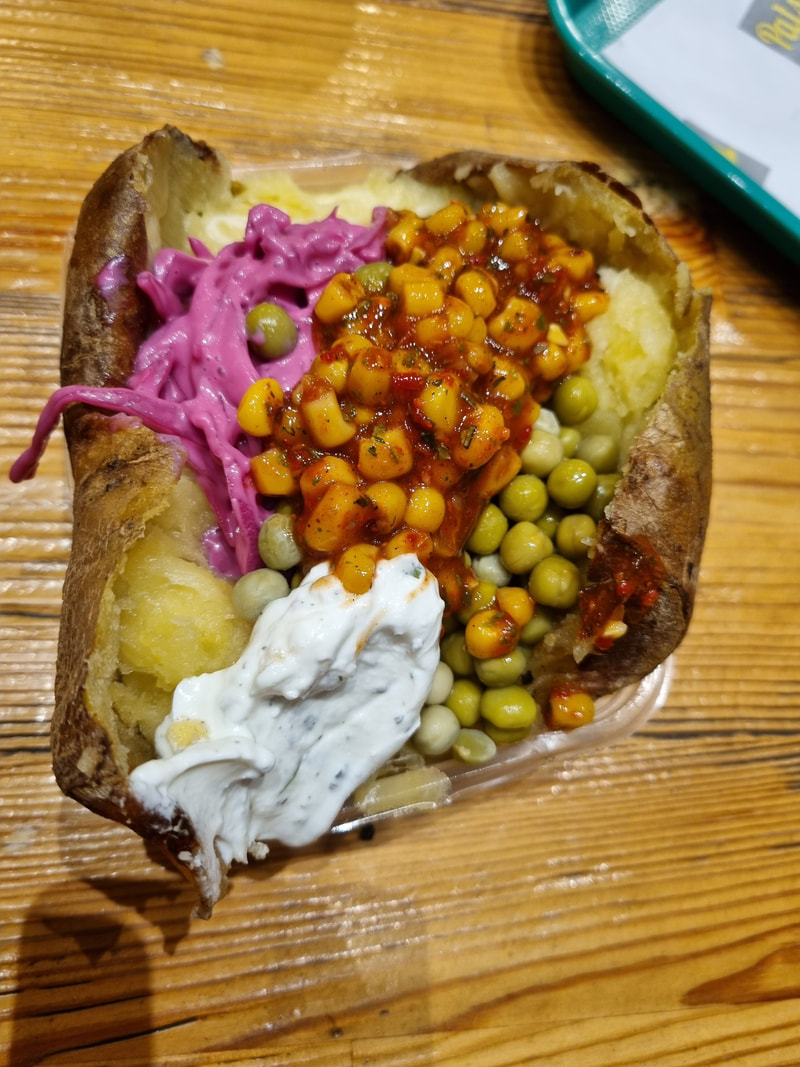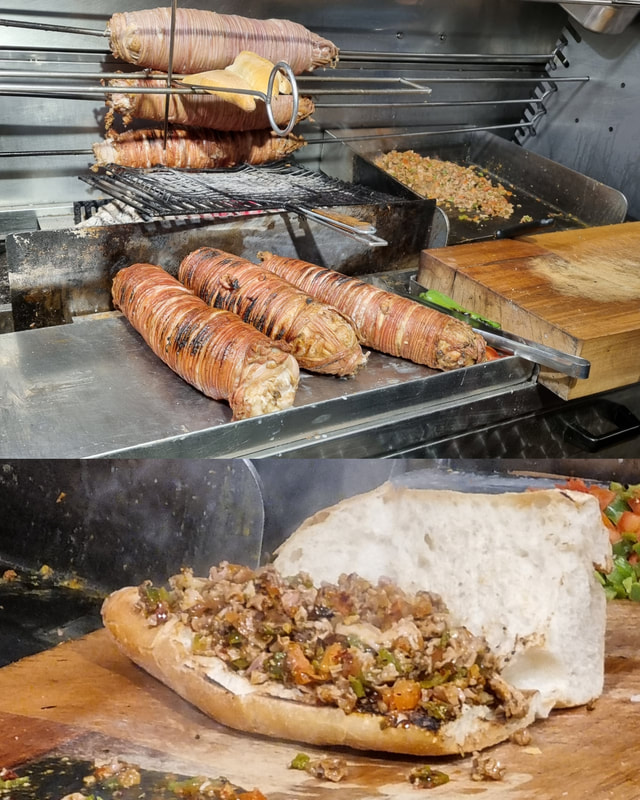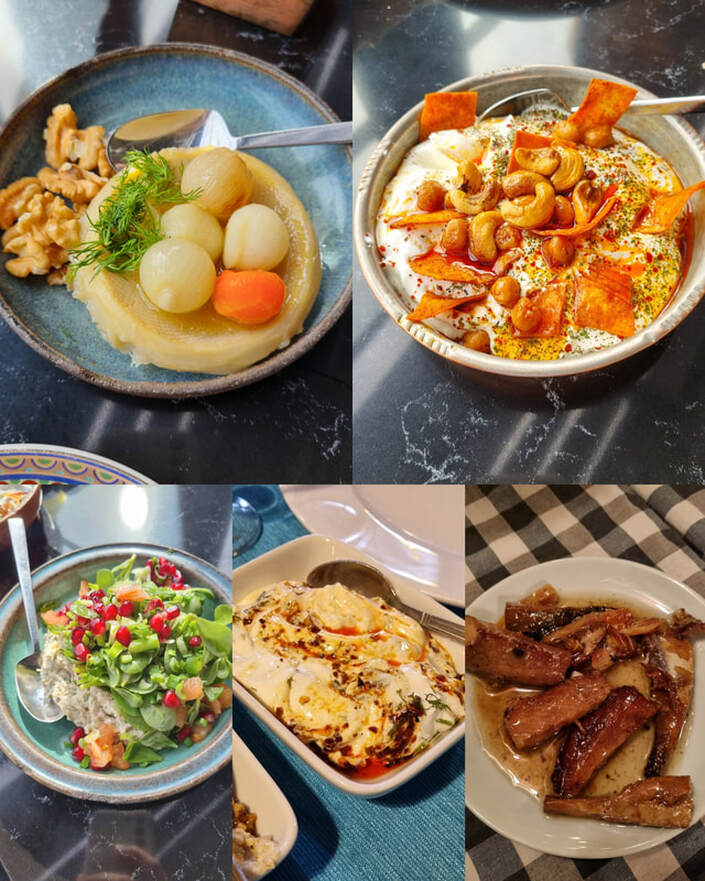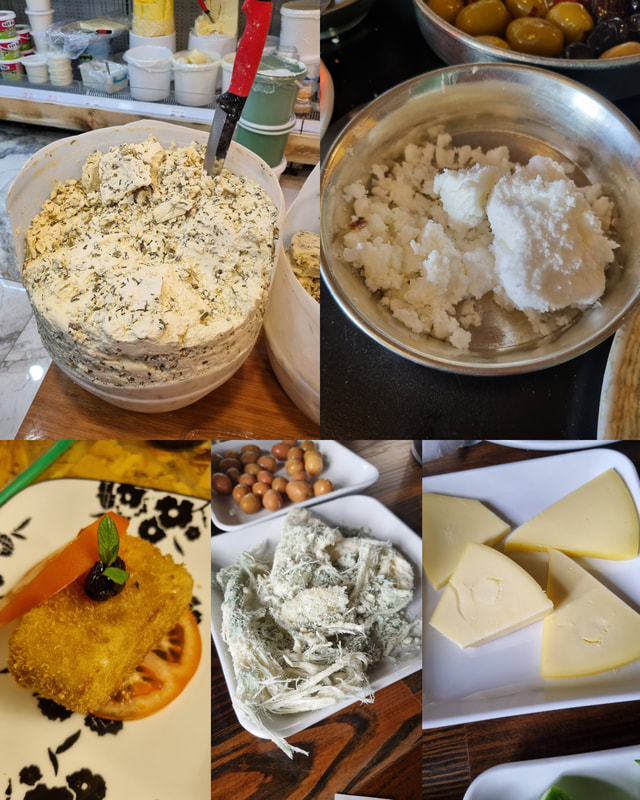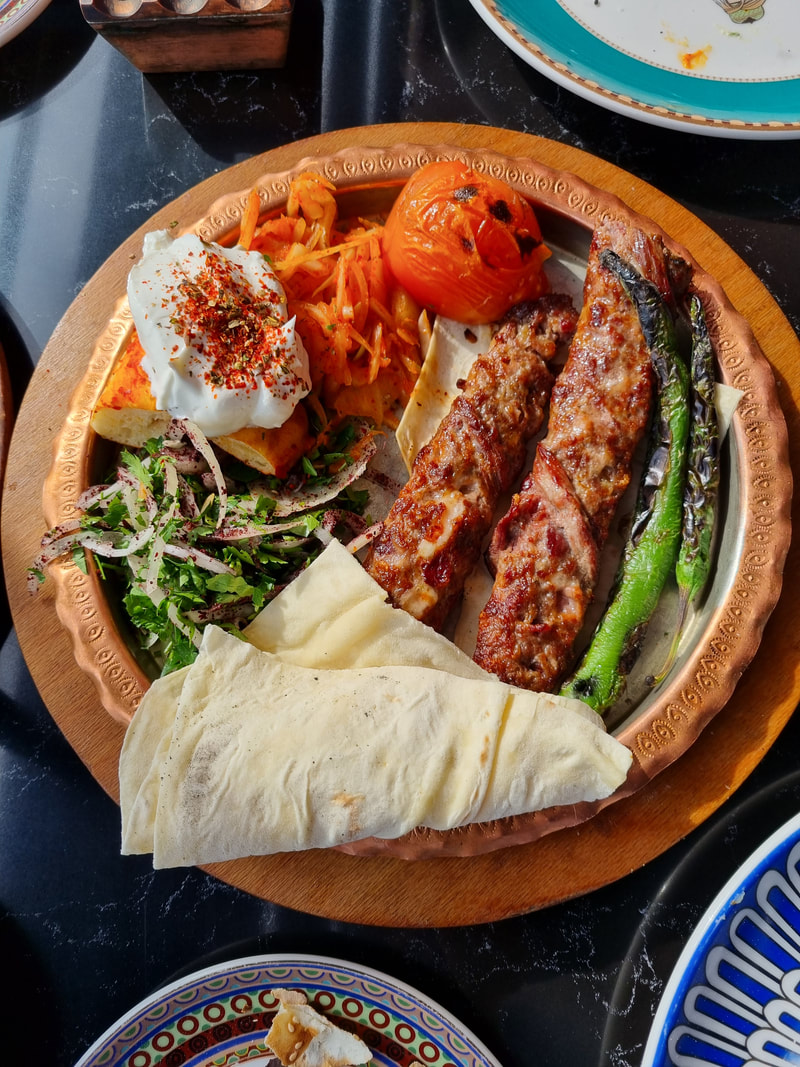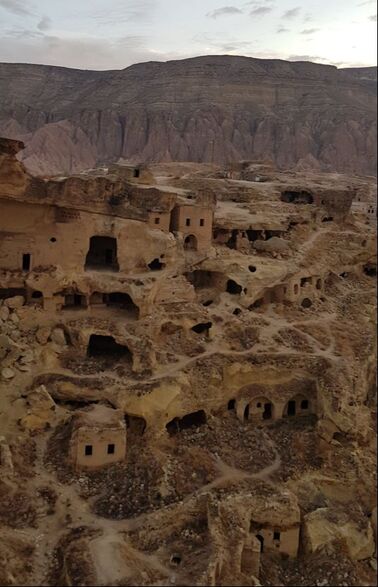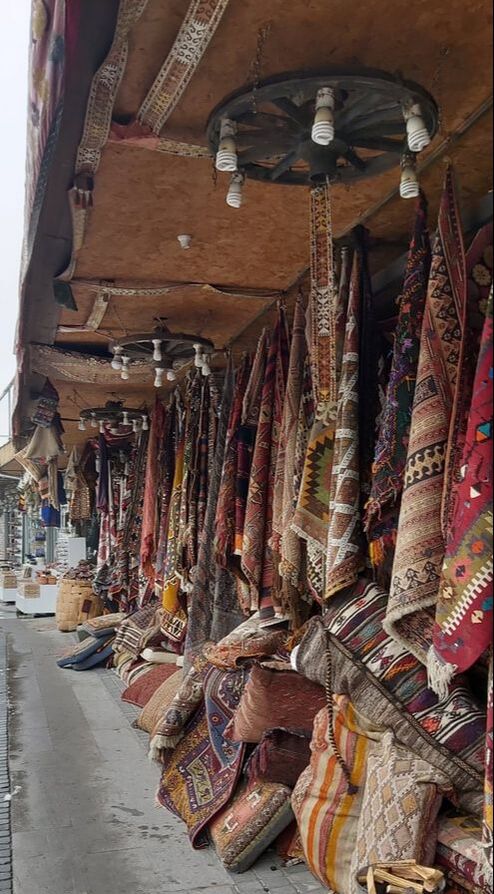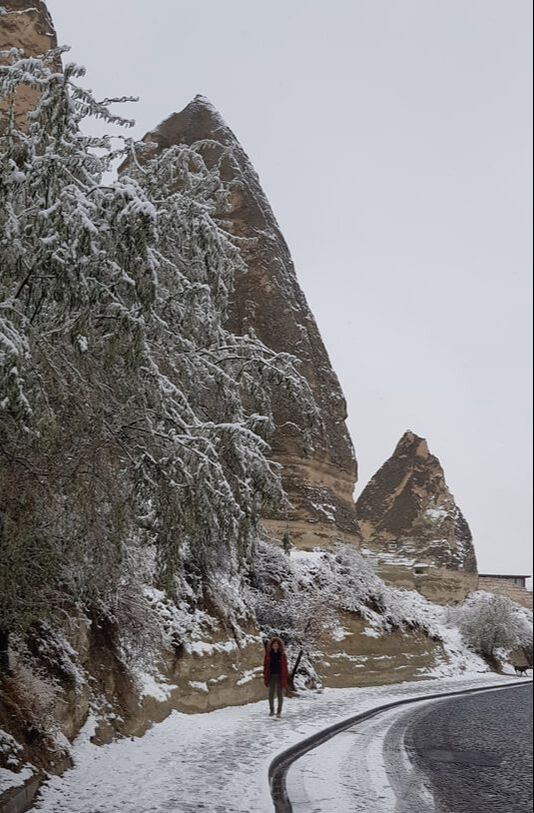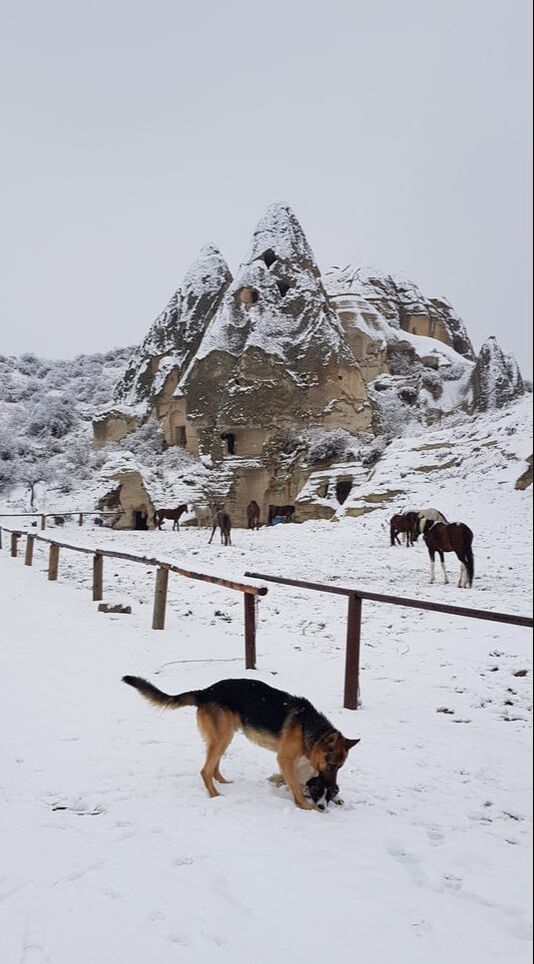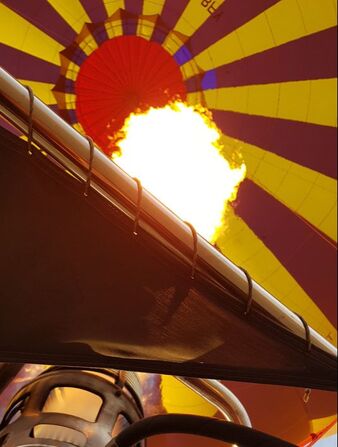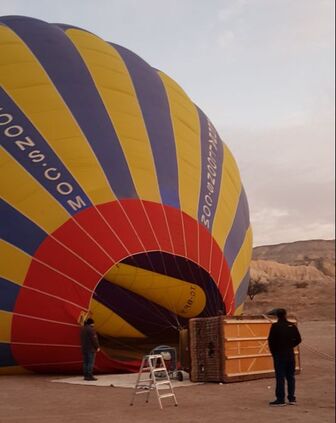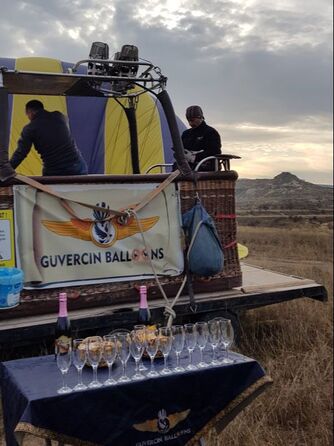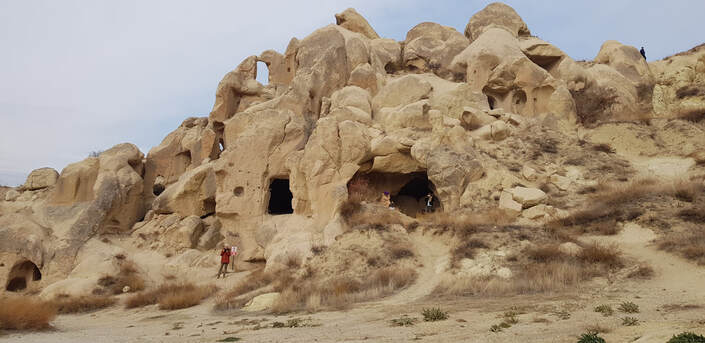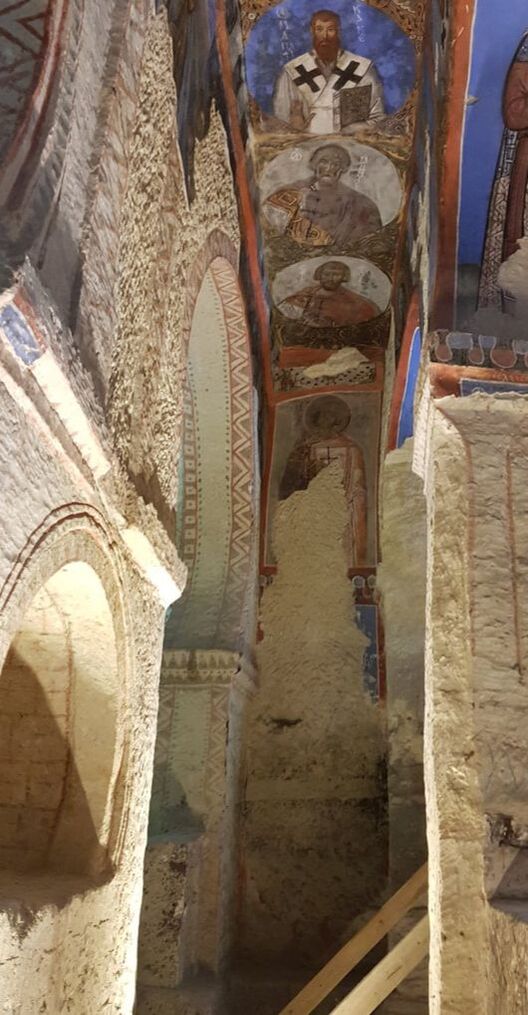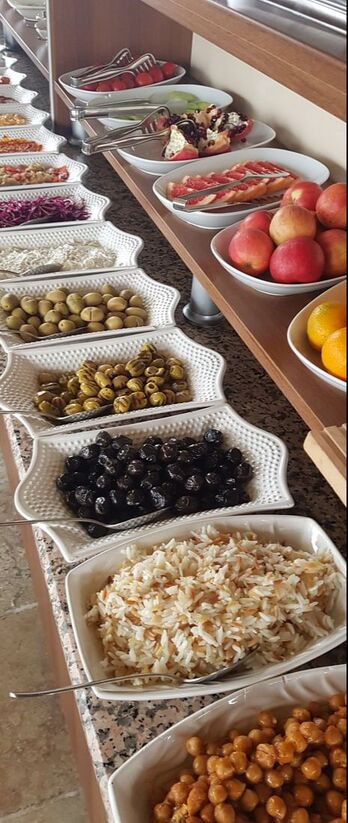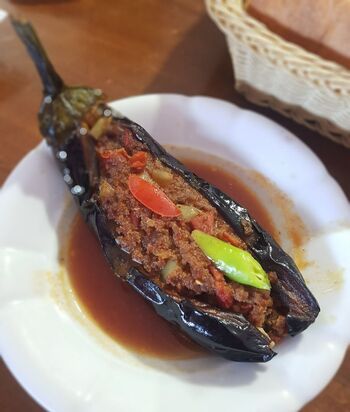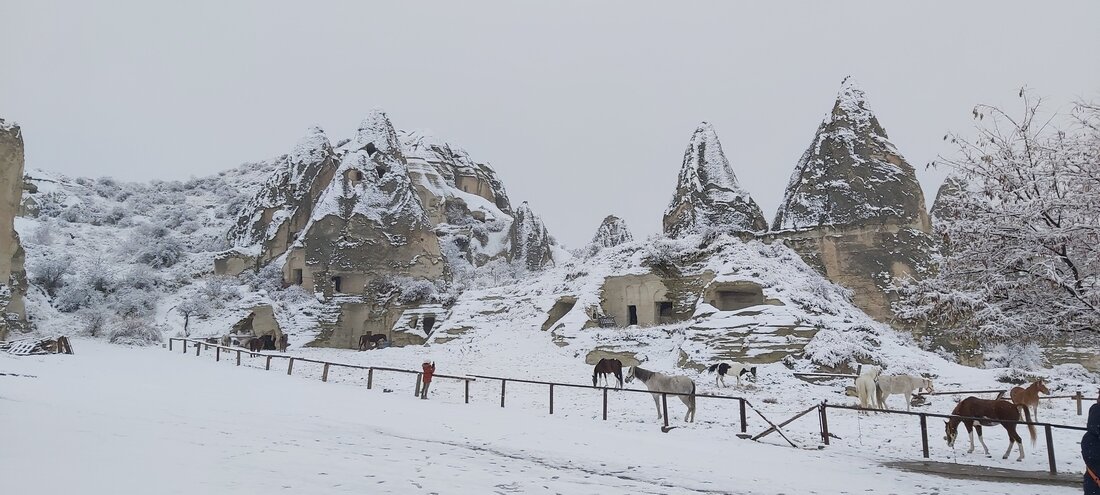|
From Van (where I was prior to Kars), there are no direct flights to get to Kars, a small town sat somewhere near the Turkey-Armenia land border. A bus is the next best option, and at Van’s bus terminal you could easily get yourself a bus ticket that travels the next day (there is only one bus from Van to Kars per day). The bus is modern, comfortable and heated, while the roads are well maintained so you could expect a pretty smooth ride. The entire drive from Van to Kars takes about 7 hours with very minimal stops, so pack yourself some snacks and a light lunch. As I arrived in Kars, it was late and freezing cold with no taxis in sight, so I had to hitch a ride with a wonderful girl and her father to the hotel (it’s a very small town, everyone lives close to each other). At a first glance my thoughts on this town was this; freezing cold with traces of Soviet Union. The temperature was a cool -13 degC, and the buildings had a distinct architecture, none like what I’ve seen in other places in Turkey. There were statues of animals by the streets, and buildings made of bleak dark stones. Nights are extremely harsh with icy pavements and frozen trees, but the daylight will allow you to immerse yourself in this quaint place filled with history and wonderful people. There are a few things not to miss out when you’re in Kars, and here are my recommendations. 1. Spend a day exploring Ani, an ancient Armenian city If there is one thing you need to do when in Kars, it is certainly this. Ani is a large compound of what used to be an ancient city, a place that at its peak, was home to 100 000 people. It was eventually abandoned and what is now left are beautiful ruins set in the most enchanting, scenic landscape by the valleys of a river (this river is also the natural border between Turkey and Armenia, and you can easily see Armenia from Ani). The city fortress is the majestic stone walls still intact for the most part, and as you go through them you’ll find yourself in a vast space with small lanes which would lead you to a variety of monuments, like cathedrals, churches, mosque and even remains of what used to be common houses. You’ll need at least half a day to explore this place, and since it is basically the outdoors, be prepared for a windy/rainy/cold day. Ani is about an hour drive from Kars town. To get there, you’ll need either a car, a bus or a taxi. To get a taxi or a bus, easily ask your hotel to arrange one for you, as they know plenty of contacts. 2. Have lunch by Cildir lake, and maybe go on a horse-carriage ride across its frozen surface Cildir lake is located almost an hour away from Kars town, and this place is especially recommended during the winter. When it’s really cold (and believe me, it gets extremely cold here in the winter), the lake freezes over, becoming a popular winter wonderland destination for locals. Imagine a beautiful vast white space lined with pine trees, and horse carriages available should you ever want to experience a ride across the flat ice surface of the lake. There are also a few restaurants that serve lunch using fish from the lake, and you’d be missing out if you don’t sample some. I deeply enjoyed a beautifully prepared trout, simply fried with a some lemon wedges and served with pickles, a hot cup of tea, all while nestled against a heater inside the comforts and warmth of the restaurant, the glaring white landscape a sight to behold from the windows. 3. Escape the cold and eat a hot serving of kunefe What on earth is a kunefe? It is a type of dessert popular in Turkey, made with layers of cheese, shredded filo, different kinds of nuts and a healthy dose of syrup, all served spanking hot with the cheese and oozing treat for your tastebuds. It is great anytime of the year, but it is especially good in winter, when all you need is a warm hug in a form of a comforting dessert such as this one. Kunefes can normally be found anywhere in the country at any good bakeries, but in Kars there is a well established place called Kars My Kunefe that you just simply have to try. It’s a large café with efficient service, and they make nothing else but kunefes, with all kinds of varieties and sizes for you try. I tried at least 3 different types and they were all marvelous. Each order also comes with a large pot of tea, a perfect compliment for this sweet treat. Location: Kars My Kunefe, Yusufpaşa, Atatürk Cd. 58/A, 36000 Merkez/Kars, Turkey 4. Walk around the Old Quarter of Kars town
The Old Quarter of Kars is by no means as big as the ones you’d find in Antalya or other bigger cities, but it is charming in its own way. The central of the Old Quarter is a river called the Kars Stream, and surrounding this river are the Kar Castle, a park, a beautiful stone bridge, an old mosque and an Armenian church. It’s a beautiful place for a nice long walk, and this Old Quarter eventually connects to the rest of the town, where you can see Soviet-influenced old structures, large mansions used to be inhabited by privileged Armenians and local cheese shops selling Kars cheese. The last stop in my coastal drive was Antalya, a large city located in the SouthWest of the coast. Driving from Kas, it took about two hours to reach this fifth-most-populated-city of Turkey. The drive was perhaps the most beautiful out of the entire trip, long winding roads wrapped along the coastline, with absolutely stunning views of the sea and cliffs. Along the way you’ll find even more small, secluded beaches, and some of them even have sunbeds arranged beautifully by the water. As you approach the city, you’ll realise that it’s much more vibrant and much more crowded that everything else you’ve driven into so far, and so begins your adventure in this seaside city. There is plenty to do in Antalya, but these are some of the top things I did and would recommend. 1. Take a Walk Around The Old City The Old City is much larger in Antalya and a lot more elaborate compared to other places along the coast. That being said, it’s a great idea to find hotels close or inside the Old Town if you’re staying in Antalya, as everything else is walkable within the area. You could see Hadrian’s gate, a large stone entrance extended by giant ancient walls that were built in honour of the Roman Emperor Hadrian during his visit here. Antalya was once ruled by the Romans, Byzantines, Crusaders, Selcuks, Ottomans and even Italians, so walking around the Old Town is a great opportunity to see the mix of all kinds of influences throughout these eras, through gorgeous old architectures and food. I easily spent almost an entire day exploring the cobbled streets, main square and old ruins in this area, and you should too. 2. Witness the majestic Duden waterfalls It’s magnificent. Really. It’s a gigantic waterfall spewing freshwater from a high cliff right into the ocean. A sight to behold, Duden waterfalls is located at the edge of the city in a beautiful stretch of park. A short walk should lead you to a beautiful view of the waters gushing out of the cleavages of the rocks, into the dark sea below. There are plenty of corners for you to stand in to marvel at it, despite the consistent crowd. And once you’re done, get your appetite in order and walk towards… 3. Eat at Sirali Kebap Sirali Kebap. I implore you to eat here if you’re in Antalya. Look, there are plenty of delicious cafes and restaurants around the city, sure. But Sirali Kebap was just a step above. Known for its meats, the place uses exclusively orange tree wood for grilling, giving off a beautiful fragrant smokiness to all your carnivorous endeavours here. The menu is long and extensive, the waiters are well informed about what’s being served in each dish, and everything I ordered was meticulous and delicious (and there was a lot of food!). I’d recommend sampling a few different mezes (try the ones that you don’t usually see in other places), and go for the Chef’s Special Kebap. It was everything and more - charred meat with a medium rare interior, pickled vegetables on the side, and warm bread to wrap your meat with. Sirali Kebap is slightly more expensive than average, but I assure you - worth it. 4. Hang out at Konyaalti Beach Konyaalti Beach is a little outside the city and a bit of a drive, but it is Antalya’s most famous beach. Well, it’s more of a seafront playground that beach. Sure you can hang out by the water, but there are also plenty of cafes and bars lined up along this very long stretch of shingle beach. The view is also quite something, as at the edge of the beach is an impressive range of mountains that could be enjoyed fully from the viewpoint. Konyaalti is a popular hangout spot for locals especially in the evenings, so expect some crowd. 5. Hike up Chimaera Mountain and see the natural fire vents
Now, this is not exactly within Antalya city, but I'd be remiss to not share my experience seeing the natural fire vents in the Chimaera mountain. Located about an hour from the city, these fire vents are the result of natural methane released from the subsurface, causing consistent fire vents scattered around the forest floor of the mountain. You'll need to hike up the well paved trail to see them, and they are best seen at night as the contrast between the darkness, the fires and the starry sky is a sight to behold. The bonus would be the cats putting up a residence near these fires, acting like they own the place! Now that I’ve wrapped up my Turkish coastal drive experience, it’s time to board the flight and head towards somewhere much, much cooler - East Turkey! If you ask me, I’d tell you that my personal highlight of the entire coastal drive was Kas. I suppose I’ve always enjoyed small villages more than bustling towns, so if you’re like me, I think you’ll find Kas a complete gem. Located at the corner of an extended peninsula of the Turkish coast, it’s a small hilly village with small streets lined with tiny cafes, charming shops and so, so, so many lemon trees. Kas is also a great center point to other places worth seeing around the area – I’ll tell you more about this. 1. Marvel The Old Quarter In almost every town in the coast, you’ll find that each of them has an Old Town, or Old Quarter. After all, Turkey has had a long history of civilization over centuries, so it’s only natural to find these old remnants in every new population, embedded as part of the modern-day habitat. Kas is no exception, and walking around the Old Quarter, you’ll find yourself going through narrow cobbled streets with old houses now turned into cafes, pubs, shops and bakery. Take your time exploring the corners of this area, and if you fancy, drop by a café or two to sample local coffee and baked goods.I’d recommend Gado café, and although the cakes weren’t that amazing to me, its high point is a guy who sits and play the piano for hours, and it’s lovely to sit with a hot cup and listen to. There are also seriously adorable cats roaming roaming around. 2. See The Most Beautiful Beach In Turkey (Allegedly) Beauty is subjective, I know, but there’s something to be said if almost everyone is consistently saying it. Such is the reputation of Kaputas beach, a narrow little beach between two high coastal cliffs. It’s a pebbly beach, and I think what makes it beautiful is the aqua green waters of the Aegean Sea against the pale beige outcrops that makes for a very mesmerizing view. In the summer this beach would be crowded, but in the winter it is almost empty, so you’d do well to make your way down the cliffs and sit for a while on the pebbles watching the sun go by. You can also see Greece from the beach, which is always a treat. 3. Explore The Kayakoy Ghost Town There’s a long list of things you can do in and around Kars, but if you’re stripped down for time and can only choose very few, then please, let this be one of those things. The Kayakoy Ghost Town is a basically and abandoned town that dates back to the 14th century. In the beginning, it was a harmonious town consisting of Anatolian Muslims and Greek Orthodox Christians. However, during the Greco-Turkish war, a population exchange occurred, and people were forced to gradually abandoned this town that had been home to them for centuries. Today, walking around this abandoned town really does have an eerie feeling to it. The stone walls and homes are empty, the large churches echo with voids and you can see the old schools and chapels, eaten by time. I took almost half a day walking around the area as it is very large, but you could easily spend longer here if you’d like. 4. Bask In The Sunset At Hallenistic Theatre A walking distance from Kas center, this amphitheatre won’t be the best you had ever seen, but it does boast a beautiful sunset facing the sea. Back in its days of glory, it could house 4000 spectators, but now it’s a beautifully aged monument. People come to hang out with friends and dates, and it’s generally quiet as the sun begin to set and you can watch it all while sitting on the ancient seats, with Meis Island (Greece) in view. 5. Enjoy A day trip to the village of Kalkan Kalkan is a small village a short drive away from Kas, and I love the chill of it. Fishermen’s boats are anchored by the jetty, and you see locals hanging out by the water, smoking and fishing the day away. Walking down the quiet lanes, you’ll see almost a glimpse of Greek-influenced structures – mosques that look like they were inspired by Santorini, their domes and walls whitewashed against the clear blue sky. The restaurants are beautiful and honours the local specialty of the place. 6. Visit Demre to See The Ancient Town of Myra, But Also To Eat A Lot Of Oranges What?? Another ancient town?? I know, I know, but seriously, they’re beautiful to explore and there are plenty of them along your coastal drive, it’s almost a crime if you don’t keep visiting them until you’re head starts spinning. Myra is an ancient Lycian town located in Demre, and you can spend a few hours roaming around this large space admiring its rock tombs and large ampitheatre. I love how the ruins are well maintained, and if you come during the winter it’s almost empty, so you’ll feel like Indiana Jones sans the villains chasing after you. But wait. I haven’t even told you the best part yet. Myra is located in the current-day orange agricultural area. What this means is when the season is right, you’ll drive through miles and miles of orange trees, their ripened fruits a beautiful color against the dark green leaves. The locals don’t mind if you pluck a few, and there are orange juice stalls here and there where you can enjoy a fresh glass of orange juice for as low as 10 liras. 7. Try Local Produce
This should actually be in the to-do list of any place you ever visit! Trying local produce straight from the fresh food market is great way to get acquainted with the local way of life. You’ll learn about what they grow locally, what’s in season and when, how they eat and if you’re lucky, you’ll get to chat with everyday people doing their everyday chores. In Kars, I had the pleasure of enjoying strawberries, oranges and lemon which were in season in winter. I bought some to eat at home with local yoghurt, and even cooked a proper breakfast using all the produce from the market. It’s quite fun trying out produce, but preparing them in my own personal way. Where To Eat: You can find all my recommendations on what to eat here, but specifically in Kas, Zula Meyhane for a wonderful dinner with a view, Smiley’s for delicious fresh seafood, the small fruit juice stall in front of Myra ruins, Good cafe for some coffee and music. Before I ever visited Turkey, I have always had an impression that Turkish food is mainly just kebabs. I blame this on the stigma that was set on me by Turkish restaurants in the city I live in, Kuala Lumpur. Often, Turkish food is bundled up as middle eastern, when of course this is far from true. For starters, Turkey is located in Europe and Asia, different continents altogether. This broad area means that there are amalgamations of all sorts when it comes to their cuisine – some influences from Greece, some from Middle East, and some from Eastern Europe. So when you dine in Turkey, expect a variation of things that would tantalize your tastebuds (and yes, not limited to kebabs!). Here are some delicacies that I think you should at least try when visiting. 1. A proper Turkish breakfast A Turkish breakfast is a feast. They come in a set platter, with small servings of a little bit of everything – think different kinds of cheeses, local honey, fresh selection of salads, breads, fruit preserves, and eggs prepared in your choice. The classic Turkish breakfast allows you to start the day by sampling local produce, and different regions often have different highlights, like a specialty cheese or a specific way of making eggs. Warm cups of Turkish tea will be accompanying your breakfast feast. 2. Lentil Soup It doesn’t sound very exciting, but truly, if there are only a few things you get to try and eat in Turkey, one has to be their lentil soups. The two generally popular types of lentil soup are the mild yellow and mercimek corbasi, the former a mild warming soup and the latter its slightly spicier sibling (my favourite!). Lentil soup is a popular choice for breakfast, as an entre before a meal and as a warming bowl during the cold winter months. The best part is that they are cheap and accessible pretty much anywhere around the country, especially in a local lokanta. 3. Kunefe Kunefe is a popular dessert found in Turkey, Egypt, Iran, Iraq, Israel, Jordan, Kuwait, Lebanon, Oman, Palestine, Qatar. Saudi Arabia, Syria, UAE and Bahrain (did I leave anyone out??). In general it is mainly made by from shredded phyllo, cheese, nuts and syrup, although there are actually variations of this anatomy, using different kinds of cheese, nuts, layering and ratio. Kunefe is very decadent, and the best way to enjoy it is at the café or restaurant itself, where they are prepared fresh and served piping hot for you. In Turkey, you’ll find that kunefe is a beloved delicacy. Every town, every village will have a kunefe place, and you’ll often see these places with crowds of locals taking their time to share this dessert with their loved ones. A larger kunefe place will even have a kunefe menu, where you can choose your own variation you’d like to try, or even the house special. I succumbed to having one (or two!) almost every night, and let me tell you, they were worth all the calories. 4. Seafood With long coast lines, a metropolitan revolving around the Bosphorus river and beautiful lakes, it’s no surprise that the Turks know their seafood. Sandwiched between the Black Sea and the Aegean Sea, the variations of fish and shellfish are a sight to behold, and an influence from the Mediterranean means that these are often prepared simply, relying on the freshness of the produce. If you’re wanting to give them a try, a good way is to always ask the restaurant what their specialties are – sometimes it’s their seafood mezes, sometimes it’s their trout, sometimes there are specific kinds of crabs available in the season. Honestly, I’ve never had a bad seafood dish in all my days in Turkey. 5. Local fruits Turkey is blessed with so many agricultural produce throughout its seasons. It is abundant with fruits and vegetables, thanks to the weather and fertile volcanic soils. You get to sample these of course when you eat at restaurants, but others, such as fruits, deserve no other special treatment other than you buying them fresh off the market to enjoy. If you can, pop into a local market and see what’s fresh and in season. Enjoy oranges straight off the trees. Buy a pack of strawberries and dip them in some local yoghurt. In a way, you are also supporting local farmers and small businesses too. 6. Lahmacun and Pide Lahmacun and pide are two siblings of the pizza family. The base is bread, where lahmacun is a thin crust and pide is a thicker choice made with a moat-shaped dough, and the toppings are meat, a mix of meat and vegetables, or cheese. Both can be easily found in their joints almost everywhere, kind of like how you would find pizza joints. The best kinds are always prepared in a woodfire oven, and although I have love for both of them, lahmacun is easily my favourite. Lahamacun and pide are what you would call street food – cheap, easily accessible and generally pleasing. In fact, it is a rite of passage for anyone visiting Turkey. 7. Jacket potato I mean, a baked jacket potato is good anywhere, right? Turkey is no exception! Locally known as ‘kumpir’, jacket potatoes are beloved within the culture, and you’ll find jacket potato stalls especially in Istanbul with an array of toppings, from pickled vegetables, chili-style gravy, meat, cheese and others. Relatively cheap, they are amazing for quick meals or even a snack. Be sure to try a kumpir at least once when you’re in Turkey. 8. Kokorec Now we’re in the realm of something that is considered an ‘acquired taste’ (which translates to: some people like it, others absolutely can’t brain it). Kokorec is basically grilled chopped innards – this includes hearts, lungs, kidneys of cows or goats – cooked over an open fire with spices, chopped and mixed with some vegetables and stuffed into a toasted baguette. This sandwich is enjoyed by locals, and I find it quite nice albeit a little strong sometimes. It’s one of those traditional delicacies that I feel worth trying if you’re in the Turkey, especially f you’re a fan of innards/tripes. 9. Meze Mezes are basically tapas. They’re small platters of appetizers commonly offered by restaurants, and you enjoy them with some bread before your main plates arrive. There are literally so many mezes to choose from all over the country, some seafood-based, some vegetarian-based and some showcasing local delights of the area. Ask the restaurants for their specials and give them a try! Whichever you choose, be sure to sample a little of each for the experience. My favourites are often the vegetarian ones, like a freshly made eggplant dip, hummus, and artichokes. However, the seafood ones are also often a delight, like a cured mackerel or anchovies in olive oil. Honestly, I don’t think you can ever go wrong with mezes. 10. Cheese It’s Europe after all, so expect a lot of cheese. And a lot of good cheese. As mentioned previously, a good way to sample local cheese would be through ordering a Turkish breakfast which would include some samples of cheese, but otherwise, all your dairy needs can be easily met in the widely available cheese chops, supermarkets and morning markets. Moreover, each region has their own specialty cheese for you to try. If I have to recommend, I’d say go for the goat cheese, which are white as snow, melts like butter and is not too salty. Kars cheese from the region of Kars is also beautifully made. For snacks, try the string cheese, as they are easy to pack, tasty on their own with simple flavours. 11. Kofte & Kebabs Of course it has to be in the list, it’s too obvious! Turkey has had a long history over centuries, and some parts of it involved ‘acquaintances’ with Arabia, through the spread of Islam and culture. As such, you could only expect the food would be involved in this evolution too, and the love of grilled meats in the form of wrapped goodness is no exception. In your life you’ve probably had many koftes and kebabs in various places, and Turkey should be added in that list. Another street food staple, the appeal of koftes and kebabs lie in its simplicity, accessibility and comfort. You can’t go wrong with a meat and bread combo, usually. 12. Sample Dishes at a Lokanta
A Lokanta is basically a mixed rice place. There are dishes on display, sometimes as little as five and as much as thirty different ones, and you can order a portion of whatever you’d like and eat them together. Lokantas are great for the low prices, but it’s also an amazing opportunity to try out different local dishes in one place. In the more outer skirts of the city or small villages, lokantas are usually family run places, and food are cooked home-style, and you know how good mom and pop places usually are…. Dishes usually vary from vegetable-based, meat-based and warming stews, with simple staples like bean soups, delicious rice and local desserts. Most of my adventures in a lokanta involves just randomly pointing at dishes and trying things out. Which is, in my opinion, the best way to eat at a lokanta. It was freezing cold while we stood in the dark in what seemed like was the middle of nowhere, and it was hard to be still in the freezing temperatures while waiting for the hot air balloon to be set up. The guy who drove us there took out a foldable table and set up a small snacking center with hot drinks, and the steam coming out of the cups was like a little piece of heavenly relief - it was -1 degrees at 6.30 am, and this was Cappadocia, Turkey. In the summer this place would be swarming with tourists. I’ve never witnessed it, but the number of shops and restaurants crammed in the little village of Goreme where I was staying at definitely indicated an anticipation of a massive pilgrimage – they have more Asian restaurants than Istanbul did, for example. But in winter, it becomes the complete opposite. I walked down the street for a few blocks and only bumped into 3 other people. There were hardly anyone at the restaurants. There were no queues at the museum. The hot air balloon was 65 euros less than the usual price. The Whirling Dervish tickets for 25 euros? I got it for free. Cappadocia is an amazing place to be at any time of the year, but in winter, it gives off a different kind of charm. It’s relatively arid, with volcanic tuffs forming strange-looking peaks and formations that look like fairytale chimneys, but these are amplified when you’ve got snowfall. The entire place begins to look like a scene right out of Disney, and if there is ever a time when you get a sudden urge to sing out a little musical, this is the time and place to do so. The small houses and buildings are covered in white, the rocky brown peaks are sprinkled with white dust, the snow on the ground are tinted purple from the falling berries off the trees, and the horse ranches were just something else – picture these beautiful creatures prancing around with the playful dogs in snowy fields as far as your eyes can see. It’s the postcard-picture ideal of serenity. During low seasons the horseback rides are only 30 euros for 2 hours, whereas in the summer, it only gets you an hour. The only downside to being here in winter is that the weather is more unpredictable. Sometimes, the hot air balloons are cancelled due to the strong winds or heavy snowfall. I was lucky that my scheduled ride went on as planned. There was no snow that day, and as we escalated above the hills I saw the horizon light up with the emergence of the sun as the day began – to say it was heavenly is an understatement. There is a specific effect, perhaps only found in this part of the world where the sunshine bathes the arid landscape with an orange tint, and you’re high up enough to see everything, but low enough to spot a dog yapping happily at your large balloon, its tail wagging. But of course natural beauty isn’t the only thing that’s magical around here in the winter. It’s also the people. The absence of touristy crowds also means that the locals are more in their natural element. The elderly walks to and from the mosques, having laughing conversations on the benches by the roadside, the kids walk to school in groups, and the weekly market only has local attendees, where everyone finds you as interesting as the new oranges that are in season. Local cheeses are sold in large barrels cheaply, and you can try olives and fresh fruits and no one would harass you buy anything. Honey and nuts are a local specialty here if you’re thinking of getting some home. Otherwise, sit at the quiet cafes and enjoy some hot chocolate while watching the snow fall quietly on the pavements – a meal or two wouldn’t be totally inappropriate. In which case, I’d suggest the Old Cappadocia Restaurant for its stone oven bread and pide (a type of Turkish pizza). Or maybe some roasted eggplants topped with stewed tomatoes, with some testi kebabi cooked in small clay potteries. And why not some homemade baklavas for dessert? Winter in Cappadocia is a definitely a dreamy affair. I’d do it all over again. Note: You can get to Cappodocia via bus or an airplane. The latter is more time-efficient, and internal flights are pretty cheap (around rm200 return). The flights land in either Keyseri or Nevsehir, and from there you can take a shuttle bus that will cost 7 euros each way to your hotel in the town center of Gerome.
|
Archives
December 2023
Categories
All
https:/
/www.bootsoverbooks.com/
|
